











MORE 2024
ISBN: 978-1-8383870-5-1
Cover image Roya Mehdikhani
Designed & produced Clare Hamman
First published September 2024
Printed London © University of Westminster
MA
Sustainable
WELCOME TO MORE 2024, and to the celebration of our postgraduate students' work from the past year. This exhibition follows on from successful predecessors that illustrates the ambition and achievements of our postgraduate and research community.
The exhibition reflects the unique combination of disciplines in the School, and the practice of students and staff in addressing regenerative and resilient Design, Making, Place, Spatial Policy, Mobilities, Territorial Transitions and Professional Practice. As in previous years, the event is being streamed and the outputs (and catalogues) shared online, giving us a global reach that matches the nature of the School's students and staff: a rich diversity of views and approaches that is critical to our ability to address contemporary challenges and explore long-term resolutions. Our student-staff climate action taskforce, ArCCAT, the Equity Forum and Cross-Disciplinary Exchange continue to frame our work and, alongside the work on show in MORE, our website openresearchwestminster.org showcases the research and knowledge exchange in our five corresponding research groups, and our worldleading research centres.
2023-24 has seen a number of changes in the leadership of the School. We say thank you to Professor Harry Charrington who as a long-standing Head of School, led A+C through the University
reorganisation and transition seven years ago, and the pandemic. Harry stepped down in July and we look forward to his continuing contribution to the School as Professor. Samir Pandya also steps down as Assistant Head of School and was appointed Reader. He takes on the role of Director of Global Partnerships within the School through which his voice will remain across the Masters courses. I joined the School as the new Head in August and am privileged that one of my first duties is to open this show. I look forward to seeing the strength of our Masters courses continue to flourish in future years.
We hope you will enjoy the show and get a feel for the creative serendipity that characterises the day-to-day life of our School of Architecture + Cities. MORE is only a reality because of the endeavour of many. There is a long list of thanks needed: Nasser Golzari and Yara Sharif, who designed and curated the exhibition, and Daniel Scroggins who organised the whole thing. Also, Clare Hamman who has designed and produced this beautiful catalogue, François Girardin and the Fabrication Laboratory staff who helped build the exhibition, Mirna Pedalo who curates our website more2024.net and social media and our campus team led by Amaniel Gebreyesus, Kow Abadoo, and Chris Meloy for their help mounting the show. And of course, thank you to all our students and the staff without whom this show would not take place.
Kate Cheyne Head of the School of Architecture + Cities
David Littlefield (Course Leader), Conor Clarke, Dusan Decermic, Maja Jović, Simon Banfield, Tomasz Dancel-Fiszer, James Engel, Clare Hamman, Debbie Kuypers, Anna Mansfield, Paresh Parmer
Dr David Littlefield is Senior Lecturer and has written, co-written and edited more than 10 books on architecture and cities. His research focuses on authenticity, heritage, regeneration and notions of place.
Students: Bianca Bumbaru, Lauren Camps, Raashi Ajay Chavan, Limin Chen, Adiba Chowdhury, Victoria Collins, Samedina Curaj, Julien de Vos, Aswin Ferdinand, Polaris Galvaz, Michaela Grieve Picasso, Ethan Allen Hall, Annie Hart, Soongyu Jang, Sushmita Katwe, Anxhela Kenga, Victoria Lam, Haoyue Li, Isabelle Lynagh, Aisha Malik, Lisha Mamgain, Nikhitha Yarebyrapura Matha, Noor Ahsan Moraby, Azmina Nayani, Lukas Neo, Bethany Nias, Cansu Oguz Karadag, Arya Parte, Isha Pramod Patil, Nicoleta Prutean, Sairah Rahman, Aishwarya Rane, Haider Sharif, Hasniha Thanganathan, Tanya Uchena, Tanya Zoha
OUR INTERIOR ARCHITECTURE MA promotes a speculative approach to spatial design that is rooted in theory and the world of ideas. Those ideas, however, are deployed to confront contemporary questions and challenges. This MA course, therefore, is both conceptual and pragmatic; experimental and rigorous. With a special focus on people and place, the course encourages students to develop a deep sympathy for the needs and aspirations of the users of a space, as well as a sensitivity towards (and response to) physical and social contexts.
Located within the School of Architecture + Cities in central London, our Masters course offers students the opportunity to choose their own pathway and develop personally and professionally. The outcomes from this approach are rich and diverse, representing the dynamism and diversity of our students and providing the freedom and encouragement to embark on design-led adventures
Our MA programme comprises a set of study modules that can be grouped into three categories: Theory; Technical Substantiation; and Design. We strive for a rich, mature synthesis of learning, a process aimed at prepare students (academically, professionally and personally)
for the challenges of a complex world. Through our theory modules, students encounter the ideas which underpin the understanding of place and site, including the notion that design and social practices are forms of cultural production. We develop research and critical thinking skills, including the use of precedent study and design method. We support students to achieve a high degree of technical proficiency in their work, including the representation of ideas, through physical and digital outputs and the investigation of materials. Students then progress to develop their own major project through either a design proposition or a written thesis.
Seeking to inspire a strong connection with, and response to, place, students this year selected their own study site within four study zones: Marylebone, Kings Cross, St James, and Soho. The results are extraordinarily diverse and ambitious: investigations into how we create space; proposals for interventions to create or enhance a sense of community; and suggested radical changes to historic buildings while respecting their cultural importance. The students have responded to the demands of site as well as offering new and surprising interpretations of the physical and social contexts to be found in central London.
Guests and Critics:
Penny Alexander (Baker Street Quarter Partnership)
Gaurav Choksi (Westminster City Council)
Mimi Dietrich
Francesca Murialdo
Richard Parry (Pitzhanger Manor)
Maria Laura Polselli
Ivana Slivkova (Westminster City Council)
Kanaka Thakker
Bruce Weil (The Lighting Design Studio)
Cansu Oguz Karadag



REPURPOSING HISTORICALLY RICH buildings raises interesting questions about how we connect with our historical heritage and keep it relevant in today's world.
The Crypt Gallery is one of those examples; once used for burials, the crypt has been transformed into a contemporary art gallery. While the space retains its unique features and continues to host the departed still today, the damaged and stacked headstones, humidity, and insufficient lighting led to the question: are we forgetting something when trying to keep up with the needs of today’s world?
This thesis project explores verticality within the church and crypt to enhance lighting and create a memorial space below while connecting the two spaces. The tube-like form linking these spaces is shaped by a glitch that is found in the photogrammetry of the space, likely caused by insufficient
lighting. This glitch was then transformed into a 3D model, becoming a focal point of a narrative that highlights the history of the space.
The glitch was physically recreated using Pepakura, an origami software that provides numerical instructions for constructing a 3D model in real life. This model allowed for experimentation with form and materiality, providing insights into how light would interact with the structure in a real-world setting.
In this narrative, the structure functions as a baptismal fount above, facing the altar, while highlighting the replica of the damaged headstones below in the crypt level. A crossshaped suspended artificial light complements the sunlight streaming through the church windows to the crypt.
Soongyu Jang Acrocircle: Transforming a space of connection into a place of connection
ST PANCRAS INTERNATIONAL STATION is a space of connection, linking neighbourhood to neighbourhood, cities to cities, and even countries via railway. Additionally, its renovation preserved its historical essence while the building was reborn to meet the modern purposes and demands of a train station, thus becoming a space that connects the past and present. This renovation has transformed the station from a mere transportation hub into a multifunctional space where a diverse array of people intersect.
Despite these multiple links, ironically what I observed inside the station was disconnection: the spatial disconnection between levels; but also between people. In other words, the station enables geographic connection but cannot connect people emotionally or socially.
The renowned geographer Yi-Fu Tuan said in his book, Space and Place, that ‘A person’s intimate experiences and feelings transform undifferentiated space into place’. Therefore my project is to transform a space of connection into a place of connection.
This design proposes a performative space. Individuals from nearby organisations like the Francis Crick Institute and Central St Martin's can present or perform their work and engage a diverse and broad cross-section of people, both invited and passing by. These activities create collective memories for people and, through shared experiences, this station is transformed from a space of connection to a place of connection.

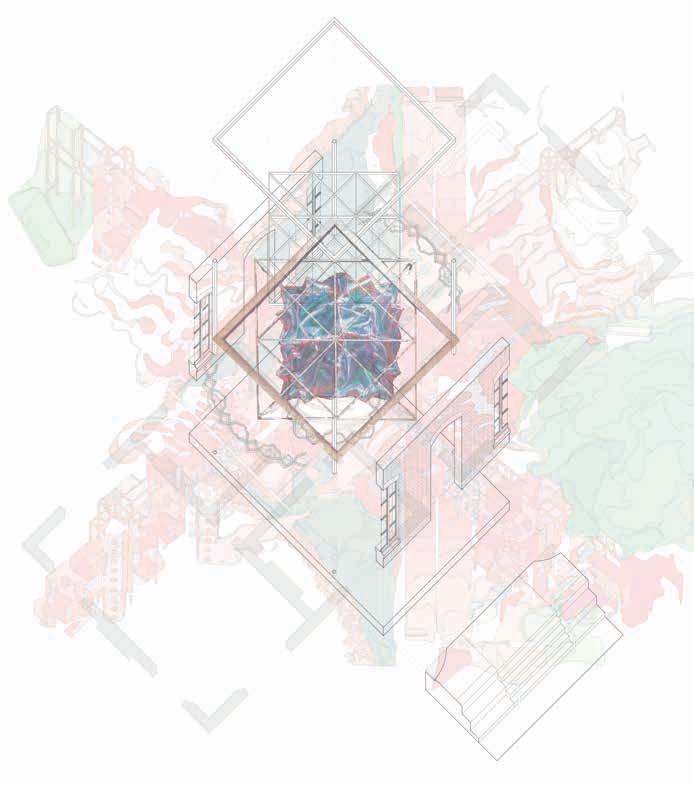
THE BREADTH OF THE UNBOUND explores the indeterminate and ephemeral qualities of queer space as a boundless, interrogative and layered spatial strategy. This work criticises Queer Britain, dubbed the first and only LGBTQ+ museum, and questions how design practices can reflect the queer embodied experience.
Queer in itself is spatial as the culture understands ideas of transition and the public and private nature of ‘coming out’ or ‘staying in the closet.’ Drawing from this point of origin, the project interrogates the landscape of Granary Square, the site of Queer Britain, and infiltrates the space with organic contours to understand the relationship between the orthogonal and the abstract.
Through a series of collage-style drawings to understand this shifting nature of change, the threshold becomes a space to examine these ideas, to fog perception and to evince ‘realness’. These ideas are manifested into a dynamic undulating mechanism to enfold visitors into this lacuna, a cavity of anti-space flowing inside and outside through anamorphic forms.
The building comprises four key spaces representative of queer culture. First, the Bar, an acting memorial to the lost gay bars of London. Second, the Stage, a tribute to queer movement and performance. Third, the Library, a working double entendre to ‘reading’, designing a space both to read and be read. Finally, the Archive, a space to understand the ‘oblique archive’ (Alice Friedman) and how queer history exists as innuendo. The conclusion to this project remains a work under construction, but substantiates the necessity for queerness in the future of design.
MA Interior Architecture theses 2024 contd.
Bianca Bumbaru
The Joy in Fear
This project aims to take the concept of fear, and change it through a playful twist. A colourful, welcoming, warm environment is created on a street that is otherwise unpleasant to walk through.
Lauren Camps
The Colony Carcass
This thesis interrogates the essence of place and the texture of memory through an exploration of Soho’s past and the in/famous Colony Club. The carnal essences of pleasure, vice and virtue become imbued and captured in the visual and haptic nature of the building’s spatial form.
Raashi Ajay Chavan
Jazz Club as a Living Museum
Through the investigation of the nature of Jazz, this design for a jazz club transforms the concept of a ‘living museum’ into an immersive experience.
Adiba Chowdhury
Breaking the Barrier
This thesis investigates extending the British Library's second pitched roof to create a different style of study space for more casual working, studying and socialising; where rotating book exchange shelves would share anecdotes and the history of the library's origins.






Aswin Ferdinand
Glitched through Time
Through digital techniques, this thesis explores and investigates lost history through time. Using augmented reality and digital mapping, it presents and recreates lost and hidden stories in an immersive and informative journey through the site of St Chads Place.
Polaris Galvez
Reading Between the Signs
An investigation into embassies’ façades as mediums for cultural representation. The thesis explores the boundaries between ‘home’ and ‘host’, extruding the significance of thresholds between cultural entities beyond their nature as diplomatic infrastructures.
Ethan Allen Hall
Unveiling the Bond between Architecture and Furniture
An investigation into the dynamic interplay between furniture and architecture, this thesis examines their points of convergence and divergence. Exploring how they share principles and blur boundaries, the synergistic interplay between choreography of form and function creates cohesive, aesthetically pleasing spaces.
Annie Hart
The Privileged Aura: Iconography of the figurative aedicule
Cultural connection is personal and multifaceted. This thesis analyses and critiques The British Library, designed by Colin St. John Wilson and inspired by Antonello da Messina’s ‘Saint Jerome’. It challenges the architect's biases and attitudes, and examines how individual perception and expression of culture can reveal methods of personal preservation.
Sushmita Katwe
From Hidden to Seen: The creative process
Embodying the artistic process, this thesis transforms the Lisson Gallery in London into an art education space for local children. Representing the creative process, the design turns the journey from inspiration, through idea generation, creative output and final expression into architectural form.
Anxhela Kenga
Rediscovering Heritage: A Green urban retreat in vintage micro-living
The Victorian arches of Pancras Road, a former coal depot and now an abandoned antique warehouse, will be transformed into an art hub with studios, galleries and apartments, fostering community and creativity. Will the zone revive through art or fade again?



Victoria Lam
A Sanctuary for Homeless Women
People remain in chronic homelessness due to their mental health issues and complex trauma, as if there is a mental block telling them their brokenness makes them unworthy of recovery. However, the philosophy of Kintsugi argues that there is beauty in their brokenness.
Haoyue Li
Inner Peace in an Outer Chaos
An exploration into how meditation can help people find inner peace and counter the sensory extremes of Marylebone Road, this project transforms a bustling pub into a tranquil meditation space. Relaxation and mental well-being are promoted through the architectural adaptations to the building.
Lisha Mamgain
The Learning Yard
The design creates a hands-on workshop for 6-12 year-olds to gain an understanding of the importance of sustainability. Exploring activities like gardening, recycling and papermaking, children are encouraged to engage in the process of transforming everyday materials into something new.
Noor Ahsan Moraby
A relationship with artificial intelligence
This project explores the relationship between artificial intelligence (AI) and human creativity. Using AI as a key tool in the creation process, I continually question who the true artist is: am I controlling the machine, or is the machine controlling me? This project examines whether I am becoming lost in the machine’s complexity or if I can navigate and dissect its key elements.
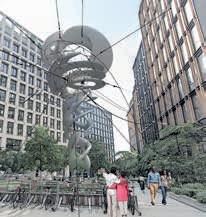
Azmina Nayani
The Aga Khan Centre: A community hubbridging cultures and fostering connections
Reimagining the Aga Khan Centre, this project aims to create an inclusive community space in King's Cross. Enhancing public engagement, accessibility, and interaction, it reflects Islamic design principles and promotes social cohesion, diversity and unity.
To be Human: The Reprieve
An exploration into how storytelling can be used to tackle the dehumanisation of illegal immigrants in the UK. It provides a more permanent home for refugees, as well as a space in which to share their story safely through a series of obscure screens.
Isha Pramod Patil
Beyond Transit: Marylebone Station's shared connections
Reimagining Marylebone Station's secondary entrance, this project enhances and celebrates connections between the station's users: daily commuters and local residents. The entrance is redesigned to provide visual connectivity and imagined links between London and the Chiltern hills; while a book and sharing library creates connections between both communities.
Sairah Rahman New Haven
This project transforms a disused church in St James to offer a space to support individuals with autism and their families by providing comprehensive resources and educational tools. The goal was to enhance understanding and offer practical coping strategies.


Haider Sharif
From Seed to Sip: The project of reveal Centred on an exclusive coffee roastery experience beneath the Burlington Arcade, this project creates an immersive journey to guide visitors through every stage of coffee production, from cultivation to cup, exploring the history and power of coffee and the evolution of contemporary London.
Lost, Found and Revived
Reimagining the TfL lost property cycle, Lost, Found and Revived creates a dynamic space where lost items are reunited with their owners and unclaimed objects find new life. Located in King's Cross Station, the space reveals the rich biographies of objects and reframes the concept of lost property as a collection of narratives.
Transit Threshold: Creative placemaking at Kings Cross Station
The existing entrance at Pancras Road undermines the station's heritage and lacks a cohesive narrative. Thus, using glass as a medium, this design incorporates intangible heritage, creative placemaking and traditional craftsmanship to preserve the station's historic spirit.
This thesis revives the vacant Church Street Triangle, where the area's historic theatre culture provides a vehicle to bring life back to the area. The interplay of actors and players is embodied in the street market by day; while existing buildings are given new life to provide spaces to nourish and enhance the local community.


Nasser Golzari (Course Leader), Krystallia Kamvasinou, Yara Sharif, Filip Visnjic, Hana Alsaai, Andrew Carr, Beth Cullen, Davide Deriu, Maja Jović, Dirk Lellau, Akma Nazar, Samir Pandya
Nasser Golzari is a senior lecturer and senior partner of Golzari (NG) Architects. His research and build projects have won a number of awards including RIBA Award for Research, Holcim Award and Aga Khan Award.
Krystallia Kamvasinou is an academic Reader, an architect and a landscape architect. Her research on the topic of Interim Spaces and Creative Use has been published widely in academic journals and books.
Yara Sharif is a practicing architect, senior lecturer and partner at NG Architects. Her work reframes architectural practice while exploring contested landscapes. Her book Architecture of Resistance and collaborative work with PART won the RIBA President’s Award for Research.
Filip Visnjic is an architect, curator and a media technologist working at the intersections of art, media and technology. He is editor-in-chief at CreativeApplications.Net, and director at HOLO Magazine
Students: Zahir Humeyra Acikgul, Nada Benhimoud, Elif Dogan, Anuja Gaikwad, Jiranya Ganjanawilanon, Andres Hernandez Chaves, Rishika Jain, Fatihah Khan, Oreinab Khoshbakht, Naveen Malle, Roya Mehdikhani, Caleb Miller, Maryam Mohammadi, Zahra Mohammadi, Yash Sanjay Potnis,
THE ARCHITECTURE MA course offers a dynamic and unique programme on advanced postgraduate study, combining a high level of design and theoretical investigation with innovative representational methods and critical approaches to contemporary discourses on the subjects of design and theory. The programme is holistic, encouraging strategic re-thinking of habitation at the scale of the city/neighbourhood or focusing on their approach to the scale of an individual building or specific room. Exploring theories and design practices in socio-environmental ecologies, students take issues of globalisation and identity into consideration and engage in conceptual and technical explorations to re-design habitation at macro- and micro-scales.
The different modules on offer encourage alternative modes of study and creative methods in design, representation and research. MA Architecture allows for specialisation in architecture design or theory through its three pathways: Cultural Identity and Globalisation;
Guest Critics:
Noor Ul Eman Siddiqui, Siham Subh, Vira Sundara, Wiktoria Swietojanska, Berfin Taghan, Ahmet Hakan Tanas, Syeda Mehnaj Tarannum, Dilara Yilmaz, Shiwei Yu, Xinzhi Zhu, Pankaj Zurunge
Digital Media; and History and Theory. Alternatively, there is an option for students to select and combine relevant modules that meet their personal interests for their career development if they decide to take the two-year post-study visa option of working in the UK and beyond.
The course team of academics and practitioners offers full skills and intellectual support for students to develop their own thesis subject, concluding in a design or written thesis project. The course also offers distinct student awards, including: the Jila Golzari Award for outstanding achievement in one academic year, the Weston Williamson + Partners prizes for Inclusive Cities' Thesis Design, and Innovative Methodologies for Creative Use of Digital Media and Conceptual Making, offering monetary prizes and the opportunity of working in practice; and the Surjit Cheema Award for the most outstanding and creative piece of writing. The awards are announced at the exhibition marking the end of the academic year.
Nick Beech, Philip Breese, Andrew Carr, Simon Cole, Richard Difford, Minerva Fadel, Anahita Fathabadi, Katarzyna-Kasia-Kwiatkowska, Joern Langhorst, Phoenix Perry, Mirna Pedalo, Adriana Useche
Caleb Miller Rebel, Reimagine, Reclaim
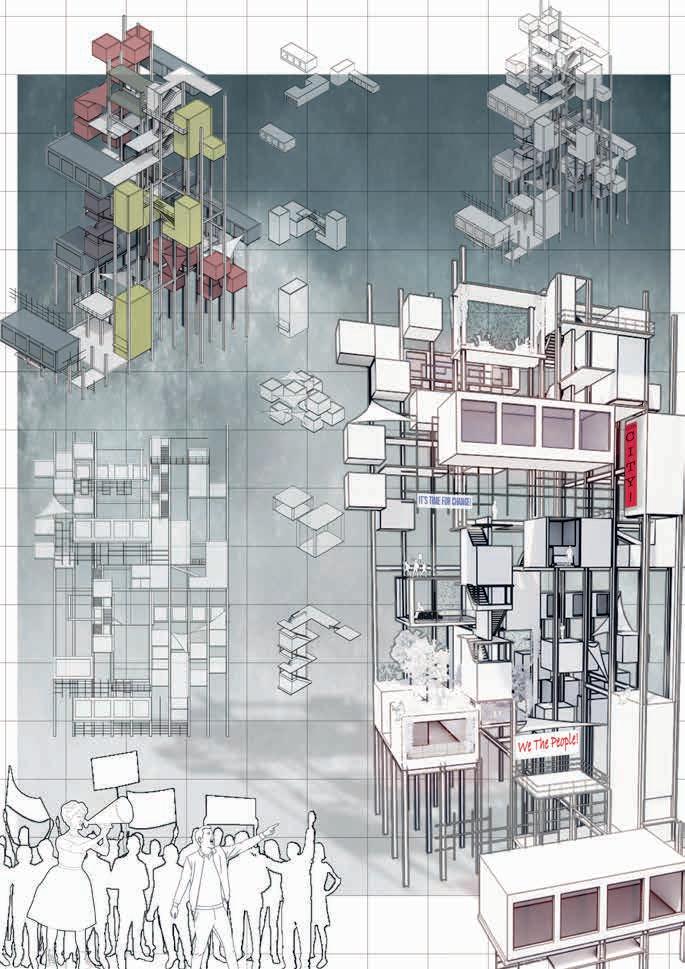
INSPIRED BY THE rise in urban unrest, which has increased in both number and impact, this thesis studies the unique relationship between democracy and the built environment – focusing on empowering marginalised communities by using architecture to challenge existing power structures. It emphasises the importance of amplifying diminished voices and utilising unclaimed spaces to promote cultural practices and encourage democratic engagement.
Protests are vital expressions of democracy, providing a platform for communities to voice grievances and drive change within cities. They challenge the status quo, prompting a re-evaluation of how urban spaces are used and perceived and serving as catalysts for social transformation. However, protests are often highly controlled and contained by using the built environment, often reinforcing the existing power dynamics by limiting movement and access, increasing surveillance and monitoring, and privatising once public open space.
This thesis underscores the significance of unclaimed spaces, like alleyways and rooftops, which often serve as escapes for marginalised communities and provide refuge from the prevailing cultural expression. By transforming these voids into spaces that accommodate unique cultural narratives, new opportunities for discourse and experimentation emerge. These spaces become vital for fostering innovative expressions and community engagement, allowing marginalised groups to assert their presence and shape their environments.
Ultimately, this thesis advocates radically rethinking architectural practices to support a more inclusive and equitable urban landscape. By creating sites for discourse and community engagement, architecture can contribute to a more democratic and liberated society. This new approach involves reimagining how spaces are used, demonstrating how architecture can be a force for genuine equality and vibrant cultural expression.
Noor Ul Eman Siddiqui
of women’s identity and belonging
THIS THESIS EXPLORES the relationship between home, identity and the built environment through the experiences of second-generation immigrant women originating from Saudi Arabia. The journey of migrants involves a series of transitions as they navigate the complexities of adapting to new environments. These individuals actively shape their surroundings to foster a sense of belonging within their host communities, continuously defining and redefining their identities. While notions of home are intricately linked to a place of origin, personal experiences and the built environment, immigrant narratives reveal evolving concepts of home and identity, often transcending geographic locations and aligning with personal memories and lived experiences.
The research is grounded in a theoretical framework that examines themes of gender, identity and attachment to place,
drawing on migration studies and relevant literature. This framework informs the analysis and interpretation of the data, providing an in-depth understanding of the factors that influence the participants' experiences. Using qualitative research methods, including ethnographic interviews and photo-elicitation, the study gathers data on how these women negotiate their sense of belonging within diverse spatial contexts. It also examines how domestic spaces are organised and personalised, reflecting the gendered dimensions of home. The findings, visually represented through diagrams and illustrations, demonstrate that the concept of home for these women is a fluid and evolving construct shaped by material memories, spatial practices and physical space. This research contributes to architectural theory by addressing the gendered and generational aspects of immigration, offering insights into the role of the built environment in shaping identity and belonging.


Jiranya Ganjanawilanon
CINEMATIC TECHNIQUES OFTEN manipulate space in ways that differ from our usual understanding. This makes film more than just a medium of expression. By assembling space uniquely, films provide a tool for critical research on architecture. They allow for alternative interpretations of architectural spaces, a method to re-think architecture, and offer new ways to look at and understand buildings and spaces.
Similarly, Bernard Tschumi's The Manhattan Transcripts (1981) redefines our perception of architectural spaces. Tschumi's concept of ‘event-space’ argues that architecture should be understood not only by its physical dimensions but also through the events and activities it hosts. This perspective challenges traditional design methods, encouraging architects to consider the dynamic interactions between space and human activity.
Eric Rohmer’s film theory (1948-1953) further demonstrates how ordinary places in films become more than just settings; they are integral to storytelling. In Rohmer’s work, familiar spaces like cafés and beaches shape characters' experiences and emotions. Whether it’s a stroll along a beach or a conversation in a cosy café, these settings evoke specific moods and thematic depth, transforming everyday locations into spaces rich with meaning.
Inspired by these concepts and the idea of a three-act structure, a series of diagrams and design prototypes were developed to translate cinematic techniques into architectural design using narrative interpretation. This approach allowed exploration of how the manipulation of space in film can re-shape our understanding and experience of architectural environments and offer new insights into the relationship between architecture and lived experience.

MA Architecture theses 2024 contd.
Zahir Humeyra Acikgul
Rethinking Privacy: Exploring the changing dynamics of urban living
The thesis analyses the social, cultural and economic effects of changes to Turkish homes, replacing traditional houses with modern apartment buildings. Through the lens of privacy, it argues that this has led to a loss of both identity, associated with houses, and privacy.
Anuja Gaikwad
Transforming the Ghats of Godavari: A critical analysis of Nashik's urban heritage
This thesis analyses the transformation and current state of Old Nashik, focusing on its disappearing culture, heritage and built environment, including old structures, Ghats, and temples along the river.
Fatihah Saif Khan
Echoes of Time: Adaptive reuse in industrial buildings
Analysing case studies, this thesis considers the adaptive reuse of historic industrial structures and explores the elements that contribute to their success or failure, looking at the connections between social dynamics, environmental sustainability and historic preservation.
Roya Mehdikhani
Liberation of the Great Pond: Reclaiming the Persian Gulf’s legacy
Proposing a visionary perspective without oil, this project imagines liberating the Persian Gulf from human colonisation and industrial encroachment. It criticises the existing paradigms, and challenges the priorities and hierarchy of values in human/nature dualism.
Nada Benhimoud
The Invisible Walls: Analysing systemic barriers behind homelessness in the UK
This thesis examines the complex interplay between policy failures that exacerbate poverty and housing insecurity, and considers how architecture can challenge these barriers to promote social inclusion.
Ricardo Hernández
Dressing the Space’s Skin
This project studies the relationship of architecture, fashion and cultural identity, referencing the Colombian Amazon's indigenous community. Using varied techniques and materials, it combines traditional and current fashion design with architecture.
Oreinab Khoshbakht
Roots & Roofs: Reimagining multi-generational co-living
This thesis explores the re-appropriation of Edwardian gardens to create a multi-generational co-living environment. It aims to transform conventional private gardens into inclusive, multi-use communal spaces to create a sustainable, adaptable urban environment, enriching residents across all generations.
Maryam Mohammadi
See Me No More
This thesis considers emotional experience and physiological responses in a world of constant digital surveillance, and explores how to create a safe environment through architectural camouflage.


Elif Dogan
Play as Resistance: Challenging Western conformist expectations
This thesis explores the concept of play as a method of resisting conformist design expectations in Western industrialised urban societies. Focusing on Aldo Van Eyck’s playgrounds in Amsterdam, it aims to reveal how play structures can resist idealised forms and users.
Rishika Jain
Towards Gender Equity in Architecture: Examining design strategies, intersections and transformative spaces
Through case studies, this thesis explores interrelated architectural concerns regarding gender equity, identifyfing and analysing disparities, and determining architectural principles that foster positive change.
Naveen Malle
Space & Reuse
Considering buildings as material banks – providing resources for potential future use – this thesis examines how technologies like 3D scanning and AI-assisted analysis could create an inventory of existing materials and plan for their future usage with the contribution of technical improvements to ease their reuse.
Zahra Mohammadi Moment of Stillness
This thesis proposes using local agricultural and industrial waste to re-skin industrial sites, addressing ecological issues through post-capitalist perspectives and using architecture as a tool for environmental and social healing in the Vaal Triangle.

Yash Sanjay Potnis Mycomorph
The thesis explores mycelium as an alternative building material for small-scale structures. It aims to develop a system, process and substrate to control and guide the growth of mycelium without the use of formwork.
Wiktoria Swietojanska Beyond Skyline
This thesis focuses on integrating cultural and historical layers into the urban environment to enhance London's Square Mile, challenging male dominance whilst promoting inclusion and accessibility by addressing socio-spatial inequalities through the city's rich past.
Syeda Mehnaj Tarannum
When Safety Fades: The power dynamics of space in Cyclone Shelters of Bangladesh
The thesis considers gender sensitivity, women's vulnerability and inclusivity in the design of cyclone shelters in Bangladesh. It questions whether the needs and safety of women and marginalised groups are taken into account during natural disasters.
Xinzhi Zhu
Green Building: Courtyard house design shelters of Bangladesh
Taking the traditional Chinese Sihe house as a model, this thesis considers how the benefits of courtyard house design where the natural lighting and ventilation provided reduce energy consumption and could be used in other settings to create a conducive space for living.
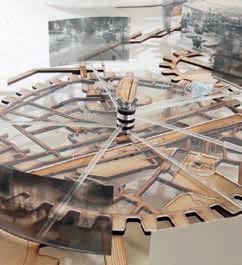
Siham Subh
The Unmaking Process: Investigating organic material decay through digital simulation
This thesis illustrates how the processes of deconstruction and decay can inspire creativity and sustainability. Through digital simulation, it highlights the transformative potential inherent in natural processes of breakdown and transformation.
Berfin Taghan Spatial Memory and Wayfinding
This thesis explores the connection between spatial memory, navigation and perception. It examines how cognitive psychology and architectural features like landmarks aid wayfinding and place memory, enhancing spatial awareness and our attachment to environments through clarity, coherence and complexity.
Dilara Yilmaz
Embracing Degrowth, Celebrating Identity
This thesis explores the development of a communal living model in London, framed by the principles of degrowth that reflect and celebrate the unique cultural practices and identities of the local community.
Pankaj Arjun Zurunge
The ‘Palkhi’ of Ecologies and Practices
The thesis explores the cultural, spatial and environmental impacts of the Palkhi pilgrimage on the Warkari community. It seeks to understand and preserve cultural heritage by examining tradition, space and community through qualitative research, sensory ethnography, psychogeography and mapping.

Vira Sundara
The Talking Tree
The thesis aims to delve into the concept of intelligence, with a specific focus on the mycorrhiza network, often referred to as the ‘talking tree’. The research seeks to comprehend how natural intelligence can enlighten individuals to recognise trees as living entities rather than inanimate objects.
Ahmet Hakan Tanas
Reconstruction of Memories: The relationship between space and human perception
This thesis examines the connection between the reality of frames and stored memories. It explores how space is perceived in memory and the unique relationship with human experience, presenting a reconstructed memory of human existence in space.
Shiwei Yu
The Hidden Layers: Skin and bone, suspended state
This thesis considers the city of Gaza, its historic culture and the current situation of the city at war. It explores how the past could surpass the present, creating a new narrative for the city.

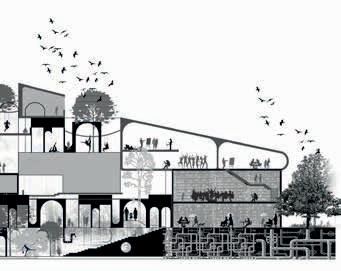

Filomena Russo, Rofayda Salem, Vera Sarioglu, Juan Vallejo
Rosa Schiano-Phan is Reader who has worked in environmental design consultancy and research for almost 25 years. Rosa is the co-director of the Centre for the Study of the Production of the Built Environment (ProBE) and has lectured and researched internationally.
Juan Vallejo is an architect and environmental design consultant working and teaching internationally between Spain, Italy and the UK. Juan’s expertise lies in the field of building performance simulation, natural ventilation and passive cooling.
Filomena Russo is a doctoral researcher with a MPhil degree in Environmental Design in Architecture from the University of Cambridge. She is a registered qualified architect in Brazil and the UK, and has practiced sustainable architecture in the UK and internationally.
Students: Tariq Sayeed Ahmed, Vania Ahmed, Delphine Arun Justin, Kumashi Dasanayaka, Atanas Ganev, Soorin Hajihaji, Zahra Jahangiri, Cem Kutukculer, Hajir Mashahdah, Oudompanhavuth Ou, Nadia Ramadan, Soma Rahem,
Saja Siraj, Iga Szczepanska, Tara Talasaz Firouzi, Filippos Tzimos, Lauren Wilkinson, Zineb Zanouny, Huiyu Zhou
IN 2023/24 THE Architecture and Environmental Design MSc, in collaboration with Westminster City Council, analysed the environmental performance of Living Environments, with an emphasis on Social Housing in Central London. The study investigated work-live environments within Lisson Green Housing Estate, located within the London borough of the City of Westminster, in the context of its climate, urban micro-climate, architectural features and occupants’ behaviour. The analysis explored the mutual effects that such factors have on indoor/ outdoor activities, environmental quality, human comfort and energy consumption in buildings. These evaluation projects led to the semester 2 design brief on ‘Designing
for the Changing Environment’. Proposals for the retrofit and re-imagination of the studied site were offered by the students with attention to the compounding requirements of social housing, energy crisis, climate change and resources conservation.
The course successfully continues the Collaborative Thesis Programme with Industry partnering with a range of architectural firms and environmental consultancies. To date theses feature a variety of topics in different climatic and socio-political contexts. This initiative have led to joint publications with our alumni and employment opportunities for our students.
Guest Critics:
Agostino Anselmo (PRP) , Dimitris Argyros (Haptic Architects) , Alessandro Cirillo (Hilson Moran) , Mari-Joe Daccache (Hilson Moran) , Jacopo Gaspari (University of Bologna) , Natalia Jackson (Westminster City Council) , Mark Martines (Architype) , Sally Matson (Westminster City Council)
Special Thanks: Herman Calleja (SOM) , Alexandra Carausu (R H Partnership Architects) , Yelda Gin (University of Cambridge) , Kan-chane Gunawardena (BDP) , Dean Hawkes (University of Cambridge) , Patrik Hermon (LCD) , Jess Hrivnak (RIBA) , Rihab Khalid (University of Cambridge) , Phil McIlwain (Quantum Acoustics) , Andrew Moore (Hilson Moran) , SEACC Sands End Arts & Community Centre, Mike Sefton (Expedition Engineering Ltd) , Tatjana Walker (University of Cambridge) , Frances Wright (Cambridge Cohousing Limited)
Hajir Mashahdah: External view of a sustainable multi-story housing design proposal in Baghdad, Iraq

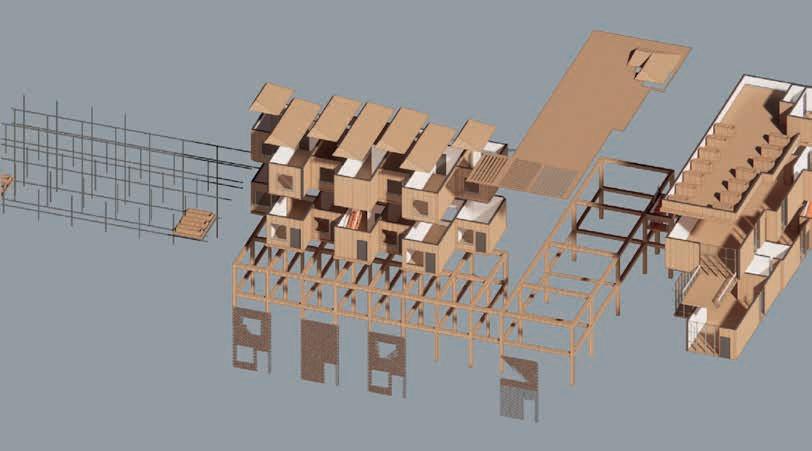
An exploration of closed-loop design, and considering existing buildings as a bank of materials and elements. This project investigates the technical strategies required for a circular economy, and their application to a design project - a mixeduse creative hub in Westminster, London.












Focusing on multi-storey residential buildings and their masterplanning, this thesis integrates UN Sustainable Development Goals into a proposal for Iraq. The project focuses on passive design strategies, renewable energy and water-saving.

An investigation into the role of facade design in energy reduction in high-rise office buildings. This project explores zero-energy buildings with a focus on the UAE.

This project investigates the design strategies that result in increased comfort in residential courtyards, and their role in modifying micro-climates. The thesis focuses on geometry, circulation, ventilation, shading and greenery.




Blake Huiyu Zhou
Environments
A study of natural and artificial lighting, and wayfinding, in an Edinburgh dementia care home. This thesis examines a three-story care centre, constructed in 2014, and proposes how lighting can be improved for the benefit of residents.


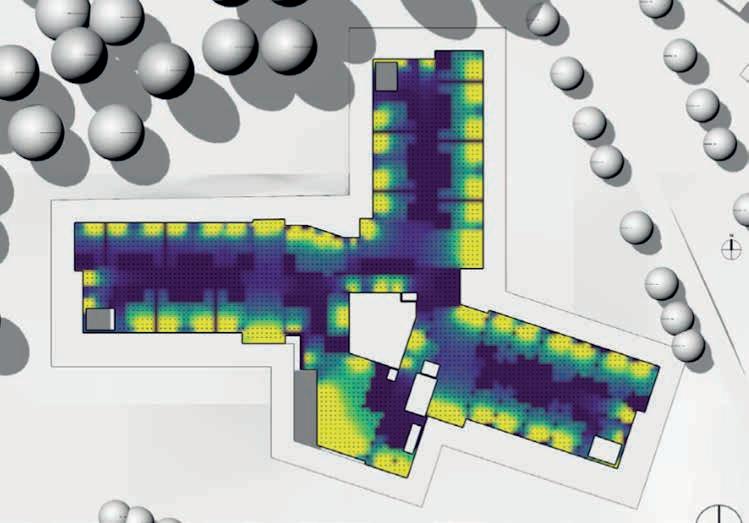
Mathewson (Course Leader), Karan Bakre, Odysseas Diakakis, Simone Gobber, Ripin Kalra, Krystallia Kamvasinou, Luz Navarro,
David Mathewson is Senior Lecturer, with over 20 years' experience as an urban designer, architectural designer and international planner. He is currently undertaking doctoral studies in planning policy related to flooding and the link with changing urban form in Jakarta, Indonesia.
Students: Tony Beaman, Shantanu Kamal Bhosle, Shania Burrage, Matthew Butters, Abubacker Hasan Shaik Abdul Cader, Neill Chauhan, Mahdis Hosseini, Mugel Khalafalla, Vedant Vivek Kishore, Sruthy Menon, Mihika Mishra, Luke Morgan, Sohrab Khan Niazi, Chris Penny, Clara Abrao Sachetti, Marika Searle-Krokidas, Kate Leuk Ki Yung
THE PG URBAN DESIGN course, with MA, Diploma and Certificate Pathways at the University of Westminster, provides a coherent approach to understanding and studying the challenges facing cities today. Combining structured academic study with live design projects, it allows students to develop practical skills alongside a theoretical understanding and an informed approach to sustainable urban development. As a multidisciplinary field, urban design overlaps with and incorporates elements of urban and regional planning, international development, architecture, landscape design, urban regeneration, geography, transport planning and infrastructure planning, drawing students from all these backgrounds.
Cities are at the centre of modern life and are the places where the majority of the world’s inhabitants make their homes. They are the hubs of economic and social life and where the majority of resources are consumed. They have evolved over time with important city images, built forms and urban profiles that attract investment while serving as cultural assets which reflect the values of their inhabitants, around whom shared experiences revolve and daily activities are shaped. This process is well understood in the West; however, in a global context the pace of
Part-time students: Grace Allman, Lewis Dodds, Dindy Duong, Daniel Lusak, Elizabeth Warden
Dissertation Tutors: Andrew Boughton, Simone Gobber, Ripin Kalra, Krystallia Kamvasinou, David Mathewson, Luz Navarro, David Seex, Louise Thomas
change is both dramatic and accelerating, creating new challenges for city design and management, particularly in the developing nations of the global south.
Drawing on the cultural and economic forces acting in the city, the urban design course focuses on understanding and shaping the physical setting in which these processes take place. It carefully considers the manner in which buildings, streets and urban spaces are combined to create distinct environments that nurture daily life, provide efficient urban systems, and form memorable places valued by their inhabitants.
The work presented here is based on student dissertations and studio design projects in which particular impacts on city design are identified and how, in the light of these effects, urban form can best be adapted to current and future needs. The practice of urban design has been emerging as a distinct profession globally since the 1960s and is underpinned by a growing knowledge-base informed by research and tested through spatial analysis and design proposal. These studies represent a critique of current responses to urban challenges and provide a unique contribution to urbanism’s body of knowledge.
Design Critics and External Contributors: Nick Bidgelow (LDA) , Claudio Borsari (Momentum Transport) , Corinna Dean, Evgeny Didorenko (LDA) , Bill Erickson, Didem Ertem, Lorenzo Stefano Iannizzotto (ISCTE-IUL, Lisbon) , Nicola Longland (LDA) , Juan Oyarbide (Prior + Partners) , Julie Plichon (Sustrans) , Marion Roberts, Filomena Russo, Jerome Thibault (Stantec) , Mark Williams (LDA) , Marcus Wilshere (The Collaborative City)
Neill Chauhan: Brick Lane



Tony Beaman
Retrofit-led Regeneration for Health: Does this place enable me to be healthy?
There is a gap in knowledge about how to ‘retrofit’ existing environments. This paper defines ‘retrofit-led regeneration for health’ and identifies a range of case studies.


Shania Burrage
TOD: Transit-Oriented Development
This dissertation investigates how Transit-Oriented Development (TOD) in the UK influences commercial gentrification, with a focus on London's Elephant and Castle. It emphasises the displacement of local traders owing to increased costs, and urges legislation to combine TOD advantages with the protection of a local
Mugel Khalafalla
Healthy and Inclusive Neighbourhood Development: Focusing on deprived communities
This dissertation undertakes a critical examination of the intersections between socio-economic deprivation and urban design, with a particular emphasis on creating sustainable, inclusive and health-promoting environments within underprivileged urban areas. The central thesis posits that the spatial configuration and design of urban neighbourhoods has a profound implications on the well-being and social equity of inhabitants, particularly in communities that experience high levels of deprivation.
Shantanu Bhosle
Assessing the Impacts of Integrating Green Infrastructure for Sustainable Urban Planning and Design
This thesis investigates the transformative potential of integrating green infrastructure into urban planning by addressing critical social and environmental issues like climate change, social equity and economic resilience to foster sustainable cities that improve quality of life and meet global sustainability goals.

Neill Chauhan
Revitalising Heritage: Adaptive Reuse in Spitalfields

The dissertation looks at the heritage of London's Spitalfields with its dynamic history and interesting urban form. It considers how the historic assets could be reused with a new purpose within the context of urban regeneration to improve the area's social, economic and environmental impact.
Kate Leuk Ki Yung
Designing for ‘social spaciousness’: Examining the role of London’s co-living phenomenon
Migration to global cities intensifies housing pressures, widening gaps between property owners and renters, as well as exacerbating the threat of loneliness in a post-pandemic world. The rise of high-income rental markets has fuelled shared accommodation and co-living spaces, targeted at young professionals. This paper evaluates the impact of co-living on the integration of communiites within London’s urban fabric.

Sohrab Khan Niazi
Analysing the Role of Inclusive Urban Design in Promoting Cultural Diversity
This dissertation investigates the impact of inclusive urban design on cultural diversity through a case study of Brick Lane, London. It evaluates theoretical frameworks, global practices and socio-economic effects, assessing how inclusive design promotes social integration and cultural vibrancy in urban environments.
Vedant Vivek Kishore
Correlation Between Street Design and Walkability
This paper analyses the connection between street elements and walkability within cities and town centres, recommending more people-oriented environments to improve the quality of life, reduce CO2 emissions and foster active lifestyles and social cohesion.

Mihika Mishra
Exploring the Impact of Urban Green Spaces on Community Bonds in London
This thesis critically analyses the impact of urban green spaces on community bonds and explore how they impact the overall health and well-being of residents belonging to low-income, middle-income, and highincome neighbourhoods of similar scale in London, UK.
Sruthy Menon
ROADBLOCKS in the Successful Implementation of Low Traffic Neighbourhoods in an Indian Metropolitan
This dissertation explores the feasibility and limitations of implementing Low Traffic Neighbourhoods in Chennai, to enhance active travel. It combines case studies, interviews and a resident survey to assess commuting patterns, safety perceptions and infrastructure needs for successful LTN adoption in the city.

Luke Morgan
Driving Social Mobility: How to effectively use trams and light rail to bring about positive social change
This dissertation looks at the existing tram and light rail systems in England. Using population and transport statistics, it ascertains the lines that have provided the largest boost in social mobility, then sets out a framework for this to be repeated.
Clara Sachetti
Green Gentrification Mechanisms Lenses at Queen Elizabeth Olympic Park, London: A comparative study
This dissertation explores green gentrification through case studies, analysing how it manifests in one primary troubled case and three secondary cases where community or governmental interventions minimised negative impacts on long-term residents, bringing insights for cases worldwide.
Christopher Penny
How can urban design theory support the practical application of Healthy Streets?
This study evaluates the Healthy Streets approach contradicting leading urban design theorists by investigating the promotion by Healthy Streets of moving away from car-centric street designs. The study concludes that a theory-based Design Guide should be developed to help support designers.
























Marika Searle-Krokidas
Beyond the ‘One World’ World: The role of pluriversal planning and participatory approaches in urban design
This dissertation aims to understand and analyse the processes employed in Medellín’s social urbanism initiatives, which provides a valuable example through which to frame the development of a ‘pluriversal planning toolkit’ that can be adopted in different urban contexts and projects.

Kamvasinou, Lindsay Bremner, Sabina Cioboata, Jim Coleman, Corinna Dean, Ripin Kalra, David Mathewson, Sadie Morgan, Federico Redin, Peter Sharratt, Abubokkar Siddiki
Giulio Verdini is Reader in Urban Planning and Co-convener of the Emerging Territories Research Group at the School of Architecture + Cities, and Visiting Professor at Mohammed VI Polytechnic University, Morocco. His research explores cultural sustainability and socially innovative territorial development in the context of fast urbanising countries.
Krystallia Kamvasinou is an architect, a landscape architect and Reader in Planning, Urban Design and Architecture. She co-convenes the Emerging Territories Research Group at the School of Architecture + Cities, and her research which focuses on the topic of interim spaces and creative use has been widely published in academic journals and books.
Students: Salima Afroz, Hassan Agha, Kainat Azadzoi, Sebastian Camp, Maria Cristina Chicuen, Lauren Clayton-Spencer, Danila Doroshenko, Maria Nunez Gimenez, Carl Irengard, Leila Hatami, Sara House,
THIS COURSE EXPLORES contemporary theories, policy and practice in international urban planning and design for sustainable development in both the Global North and South. Students undertaking this Masters course learn how to develop inclusive, safe, resilient and sustainable cities, in line with UN Sustainable Development Goals. By exploring a wide range of growing climate change and other environmental, economic and social pressures and risks, they will be ready to operate internationally, providing context-based and culturally-sensitive solutions to forge sustainable cities of the future.
Structured around written assignments and studio-based projects undertaken in group workshops, and supported by lectures, seminars, tutorials and site visits, the course is grounded in three core modules: Planning in a Globalising World; International Spatial Planning Practice; and Sustainable Neighbourhood Development. Students then choose to follow one of two pathways: Spatial Planning has a strong urban design component and an emphasis on development planning; alternatively, the Urban Resilience
Gulsabah Mehdiyeva, Chiaka Promise Merenini, Julaiha Sanofar Mohamed, Prachi Sandeep Patil, Rashmi Shinde, Nour Rustum, Chalini Dedunu Bandara Wewalage
pathway has a sustainable development-focus with a core emphasis on climate change risks, adaptation planning and natural hazard risk management. During their studies students will be exposed to a number of newly conceived innovative planning methods and skills, such as scenario planning, design thinking, community co-production and urban foresight and anticipation. As the University of Westminster was the UK’s first Habitat partner University, the course has benefitted since its inception from a range of academics and practitioners widely involved in international organisations. The curriculum draws therefore from solid theoretical foundations and, at the same time, on deep relations with policy and practice.
MAIPSD is aimed at international, UK and EU students with a relevant background who wish to gain an in-depth understanding of planning and sustainable development, whether to improve career prospects in their country or enter UK or international practice. The course is fully accredited by the Royal Town Planning Institute (RTPI) as a ‘combined planning programme’.
Special Thanks:
Guest Critics:
Imane Bkiri (Centre Jacques Berque, Rabat) , Darshana Chauhan (Co Plug) , Nandini Dasgupta, Yann Leclerc (Dar Group) , Didem Ertem, Kim Hitch (King’s Foundation) , Filomena Russo.
Gino Brignoli (Biodiversity Officer, Cody Dock) , Youssef El Ganadi (International University of Rabat) , Chandrima Mukhopadhyay (UNHABITAT, India) , Simon Olley (Friends of the Parkland Walk) , Olivier Sykes (University of Liverpool)
Lauren Clayton-Spencer: Empowerment through sustainable development, Poipet, Cambodia
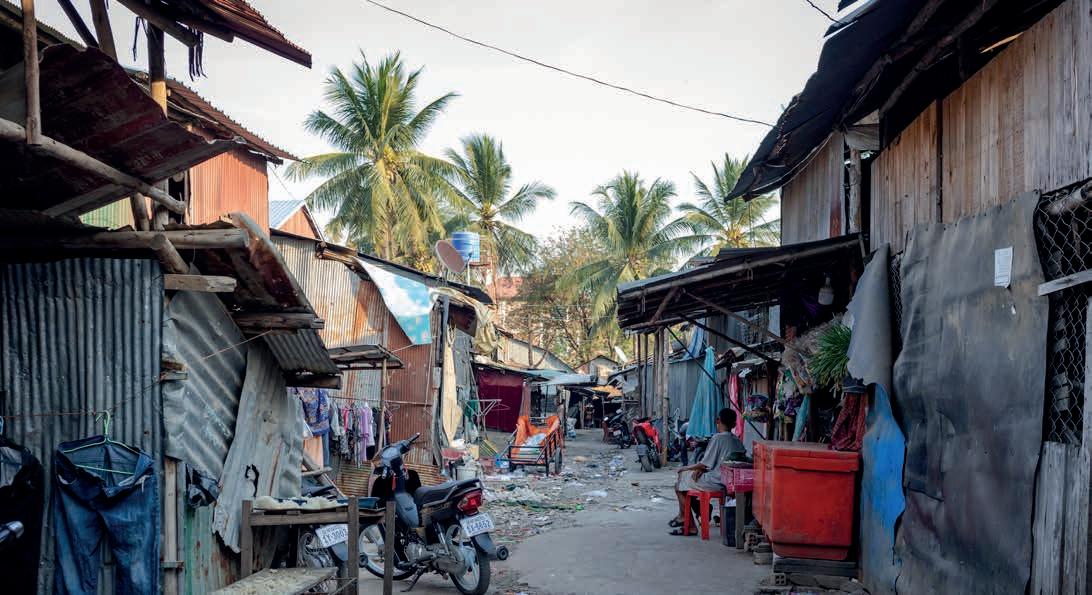


Julaiha Sanofar Mohamed Abdullah
Enhancing Urban Flood Resilience through Naturalised Restoration of Urban Waterbodies in Chennai City
This dissertation explores enhancing urban flood resilience by restoring urban waterbodies and applying Blue-Green Infrastructure (BGI). Through a review of case studies, and nature-based solutions and policies, it examines how integrating these strategies impacts flood mitigation and considers the consequences of applying the theory in the case of Chennai.


Salima Afroz
Assessing Placemaking in Urban Waterfront Regeneration: Comparing Canary Wharf and Granary Square, London
This study investigates the activities of public spaces managed by private companies within the context of London's rapid commercial urban regeneration. By comparing two regeneration projects, this research assesses how successfully public activities are conducted within these privately overseen public areas.
Sebastian Camp Conviviality For All
Britain has witnessed a growing phenomenon of polarisation, often described through terms like ‘culture wars’ and ‘tribalism’; expressions that encapsulate deep societal divides. This thesis considers how urban green spaces could be designed and programmed to facilitate inter-group conviviality and integration between diverse communities in London.

Maria Jose Nunez
Hassan Agha
Understanding Causes of Urban Sprawl in twin cities of Pakistan: Analysis and mitigation strategy
This project investigates the rapid sprawl in Islamabad and Rawalpindi, Pakistan's twin cities, analysing underlying causes and proposing mitigation strategies to manage urban growth sustainably.

Kainat Azadzoi
Synchronising Informal Settlements in Kabul: Managing informal settlement upgrades
Informal and squatter settlements do not necessarily represent examples of urban crises but have an important role in providing affordable housing and shelter.
The Challenge of Sustainable Mobility in Developing Cities
Sustainable mobility has become an increasingly important global concern, involving governments, city planners and citizens alike. Many cities across the world are adopting innovative strategies to tackle this issue, leading to significant transformations in urban development.
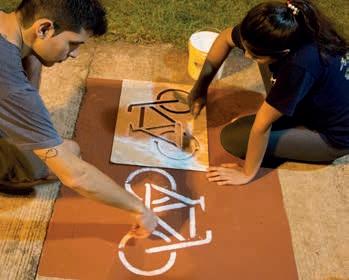

Lauren Clayton-Spencer
Empowering the Informal: Reducing risk through sustainable urban development and management in Poipet, Cambodia
This project explores how introducing solid waste management can promote riparian ownership in Poipet's informal waterfront settlements. By making residents guardians of the river, it aims to decrease flood risk, secure tenure and foster environmental stewardship.
Rashmi Shinde
Restoration of Mithi River: Evaluating the proposal for water transportation for sustainable urban development in Mumbai
This thesis evaluates sustainable transportation options and revitalisation of the environment around the Mithi River, Mumbai, involving local communities, to present a comprehensive urban development strategy for the area.
Chalini Dedunu Bandara Wewalage
The Impact of International Students on the Neighbourhood Character of Easton, Bristol
This thesis seeks to capture international students’ subjective experiences and perceptions of their stay in Easton, Bristol, as well as concerns of studentification and neighbourhood cohesion. Through the lens of international postgraduate students, changes to the neighbourhood character provide insights for future urban planning strategies.

Sara House
Implementation of SuDs in River Restoration for Flood Risk Reduction: Rio Choluteca, Honduras
This thesis explores how incorporating sustainable drainage systems (SuDs) in the restoration of Rio Choluteca, Honduras, to effectively manage storm water and reduce the volume of runoff and rainwater reaching the river, could mitigate the risk of flooding caused by natural disasters.
Nour Rustum
Beyond the Surface: Examining the Impact of Surface Floods on Mobility/Road Users in Urban Areas
This study explores the impact of surface water flooding on urban transportation, focusing on the London Borough of Hackney and assessing the potential of Sustainable Drainage Systems (SuDS) to bolster road network resilience and alleviate flood-related mobility issues in urban areas.

Dimah Ajeeb (course leader – MATM), Lindsey Hanford (course leader – MAED&M), Stroma Cole, Helen Farrell, Clare Inkson, Josef Jammerbund, Maja Jović, Chiara Orefice, Rutendo Musikavanhu, Ilaria Pappalepore, Andrew Smith
Dimah Ajeeb is Senior Lecturer at the School of Architecture + Cities and Westminster Business School. Her interdisciplinary research interests include architectural and urban design, community prosperity and empowerment, tourism governance, heritage, and cultural tourism.
Lindsey Hanford is a Senior Lecturer in Events. Her key academic interests are informed by ongoing industry engagement and include event strategy, logistics and evaluation as well as the professionalisation of event management.
MA Event Design & Management
MA Tourism Management
MAEDM Students: Muneeb Ahmad, Farhan Ahmad, Ellie Albalawi, Guntas Arora, Federico Baldi, Angelica Francisca Cantarellas Bauza, Shtakshi Chawla, Dario Coughlan, Michela De Salvo, Bhuvana Dinesh Kumar, Laura Duque Echeverry, Mahta Ebrahimisarighieh, Aditya Gokral, Emma Ho, Kentaro Ikegami, Jolly Ikekhide, Ceren Kalfa, Carolina Kravina, Jenna Lustyk, Jamil Fouad Mira, Seraina Mueller, Valeria Muraveva, Ivy Nguyen, Lúcia Ressurreicao Soares, Shani Sajeevan, Mari Salehi Seyed Salehi,
THE MA COURSES in Event Design and Management and Tourism Management are strongly aligned and delivered by a close-knit team of established academics, early career researchers and practitioners, all of whom have a range of professional experience in events and tourism.
The situation of our sister courses within an architectural school affords them a unique position within the UK higher education sector. Drawing on our own research, we take a distinctive approach to the spaces and places of tourism and events, focusing on the urban environment and destinations, enriched by our links with industry.
We attract a diverse and highly international community of students who come to the courses with a range of education and prior experience. All of this makes for a dynamic and rich study environment for students and staff alike, and fully reflects the global nature of professional work in tourism and events.
Hoori Seylsepour, Sabira Sultanbekova, Kamonn Tansanguan, Léonie Thomas, Mozhgan Yarali, Sepideh Zare
MATM Students: Anirudh Asija, Victor Bravo Valdez, Megan Coy, Malavika
Jai Narayanan, Rashmeen Kaur, Ririko Kawahara, Kamal Kunwar, Sewnet
Tesfaye Lema, Mu Li, Karolina Marcokova, Quillie Nguyen, Shakila Parizad, Phayth Patrick, Vanessa Rada, Flora Rizzi, Jin Sasaki
These taught masters courses provide students with the opportunity to focus their studies through a range of optional modules. These reflect the research interests of the staff team including creative experience design, global festivals and events, the inter-relationships between tourism, culture and society, airport and airline management and, tourism entrepreneurship.
The courses combine small-group classes, some studio work, experiential learning and independent study. We are fortunate to draw on excellent industry links to provide a range of guest speakers, visiting lecturers and field trips. In the final phase of their studies students produce a thesis using original primary research.
Our alumni have been recognised for their scholarly and professional achievements, including multiple winners of the Tourism Management Institute’s Postgraduate Dissertation Prize.
MA Event Design and Management
Theses 2024
Muneeb Ahmad
Community Engagement in sustainable Event Management: Examining the social and economic impact on local tourism
Farhan Ahmad
Event Marketing Strategies: Investigating effective strategies to promote and attract participants
Ellie Albalawi
Trends in Green Events: Identify future trends and innovations in sustainable event management
Guntas Arora
Analysing the effects of virtual and hybrid events on attendance engagement and satisfaction
Federico Baldi
Brand and experience analysis of international events produced by UK-based electronic music labels
Angelica Francisca
Cantarellas Bauza
Community Engagement in Event Tourism: Local perceptions of La Beata Festival, Mallorca
Shtakshi Chawla
Destination Weddings: Exploring attendee satisfaction and event experience
Dario Coughlan
Sustainable Formula 1 Event Infrastructures: Environmental impact and venue selection criteria
Michela de Salvo
The Experience Economy: The importance of attending live music events post-COVID-19
Bhuvana Dinesh Kumar
Crafting Experiences, Creating Buzz: The role of social media in event management
Laura Duque Echeverry
Addressing the Challenges of Creating Diverse, Equitable and Inclusive Events
Mahta Ebrahimisarighieh
Impact of Fashion on Music Festivals in the US and UK
Aditya Gokral
The Transformative Power of Events in Empowering
Marginalised Communities
Lúcia Ressurreicao Soares
The Impact of Brand Activation Events on Consumer Engagement in the Beauty Industry
Shani Sajeevan
MA Tourism Management
Theses 2024
Anirudh Asija
The role of Local Communities in Sustainable Tourism Development
Victor Bravo Valdez
Benefits for Indigenous Peoples of Sustainable Community-Based Tourism: Tosepan Kali, Mexico
Comparison of Brand Activation, Engagement and Sponsor Recall at Two Mega Events
Kentaro Ikegami
Shibuya Halloween Emma Ho
Jolly Ikekhide
Augmented Reality at Live Events, Nigeria: An Assessment of Global Trends and Local Realities
Ceren Kalfa
Disney's Robotics: Transmitting immersive design knowledge into live music events
Carolina Kravina
Accessible Live Music Events: Employing technologies and practices to aid people with hidden disabilities
Jenna Lustyk
The Influence of the West End on the Production, Promotion and Reception of Musicals in Paris
Jamil Fouad Mira
Volunteer Engagement and Sustainability at Mega Events: Diriyah Season, Saudi Arabia
Seraina Mueller
Barriers to Women in Leadership
Roles in the Events Industry: A mental health perspective
Valeria Muraveva
Is the future of the Olympic Games in collaboration?
Ivy Nguyen
Harmonising Culture and Tourism: The impact of music festivals on destination branding, South Korea
The Role of Sustainability Events in Communicating Climate Change: Strategies, challenges and impacts
Mari Salehi Seyed Salehi
Elevating Visitor Engagement: How illumination and 3D installations shape emotional and interactive exhibition experiences
Hoori Seylsepour
The Transformative Potential of Participatory Placemaking Events in Public Space Activation
Sabira Sultanbekova
Cultural Fusion in London: Exploring the influence of Central Asian Spring Festival on diaspora
Kamonn Tansanguan
Local Meets Global: Bridging the gap in event marketing and conference management processes
Léonie Thomas
The Logistical Challenges of Tour Management in the Musical Theatre Domain
Mozhgan Yarali
Exploring the Role of Visual Arts in Promoting Sustainability in Event Design
Sepideh Zare
Enhancing Event Experiences through Sustainable Practices: A study within boutique hotels, UK
Megan Coy
The Future of Luxury Travel
Malavika Jai Narayanan
Literary Heritage in London
Rashmeen Kaur
Indian Cuisine in London
Ririko Kawahara
Destination Marketing: Evaluating strategies to promote Japan in the British market
Kamal Kunwar
Adventure Tourism in the Hymalaya
Sewnet Tesfaye Lema
Pro-Environmental Travel: Investigation of behaviours of Gen-Z travellers
Mu Li
Ethnic Tourism in China: A study of the opportunities and challenges
Karolina Marcokova
The role of Equestrian Tourism on the Mental Health of Individuals
Quillie Nguyen
Analysis of the Impact of Sustainable Tourism in South-East Asian Countries
Shakila Parizad
Literary Tourism: Jane Austen’s influence on promoting tourism in Bath and Chawton
Phayth Patrick
The Experiences Faced by West Indian Women Solo Travelling Within Europe
Vanessa Rada
Relationship between employee engagement and customer experience in the US airline industry
Flora Rizzi
How Screen Tourism Influences Destinations and Tourist Behaviour
Jin Sasaki
Does a hub airport help a country's tourism market?
Nigel Dennis is the course leader and a specialist in airline economics, forecasting, scheduling and operations. He has served on international committees including those of the Transportation Research Board in the US and the Association for European Transport.
Andrew Cook is a professor leading the department’s air traffic management research and sits on national and international ATM committees. He also lectures on air transport market research and data analysis.
Anne Graham is an emeritus professor, specialising in airport economics, finance and aviation issues related to tourism. She is author of the book Managing Airports published by Butterworth-Heinemann.
Frances Kremarik is a senior lecturer who is closely involved in the day-to-day running of the course and specialises in airline networks and the North Atlantic market, passenger rights and disability issues, airline marketing, as well as air travel statistics and surveys.
Sugandhi Jayaraman is a lecturer focusing on airport management and operations, sustainability and environmental issues, and the digitisation of air travel.
THE MSC AIR Transport Planning and Management is a very practical course that brings together academic content with a large number of specialist contributors from the aviation industry. It is uniquely taught in block mode where students attend for modules of five days’ duration, making it very accessible to part-time students working in the aviation industry both in the UK and internationally. Additional activities are arranged for fulltime students in-between the module blocks, including tutorial and discussion sessions, guest lectures and visits to airport facilities and outside events.
Students come from a range of disciplines (first degrees have included Economics, Geography, Engineering, Languages and Music). No prior knowledge of the air transport industry is assumed but a passion for aviation is one of the best qualifications taken in conjunction with a formal academic background or equivalent appropriate work experience.
Students take three taught core modules: Air Transport Economics; Air Transport Management and Operations; Air Transport Forecasting and Market Research; and select
three taught option modules, currently from a choice of four: Airport Finance and Strategy; Air Transport Policy and Planning; Airline Marketing and Business Models; and Air Traffic Management, Scheduling and Network Planning. Students also have the possibility of a free choice module from another suitable programme in place of one of the three options. Most modules include a group workshop or business game in which students apply their knowledge to work as a team in a competitive environment.
The Research Dissertation is also a core module undertaken in the second half of the study period. A wide range of aspects of the aviation business can be analysed and this year’s dissertations have covered subjects including: forecasting demand for air travel and implications for airport capacity; adaptation of military airports in Thailand for air transport; prospects for an ultra-low cost carrier in the Indian domestic market; the reduction of UK domestic air services following the pandemic and future prospects; feasibility of Sustainable Aviation Fuel (SAF) for short-haul aircraft; airline alliances and mergers in Africa; impact of virtual video platforms on business travel by air.
Guest Speakers:
Carole Blackshaw (aviation consultant) , Neil Cottrell (formerly British Airways) , Guillaume Burghouwt (Schiphol Group) , Adrian Clark (NATS) , Tim Coombs (Aviation Economics) , Tim Hawkins (Manchester Airports
Group) , Kelly Ison (American Airlines) , Antoinette Nassopoulos (Foster and Partners) , Daniel Prinz (Lufthansa Industry Solutions) , Simon McNamara (Heart Aerospace) , Tim Wheen (Heathrow Airport)
Marzena Piotrowska is Senior Lecturer whose primary research interests focus on city logistics, urban freight consolidation and transport policy. Her current research centres on the role of urban freight consolidation facilities in supporting sustainable city logistics.
Jacques Leonardi is Professor of Sustainable Logistics with over 20 years’ experience in developing, testing and evaluating sustainable logistics solutions. His research focuses on supply chain energy and global logistics, and applies survey methods to evaluate new technologies and policy impacts.
Maja Piecyk is Professor in Logistics. Her research interests focus on the optimisation of supply chain networks, GHG auditing of businesses and the sustainability of freight transport operations.
Julian Allen is Senior Research Fellow. His research interests include the role of transport policy in reducing the negative impacts of logistics operations, developments in retailing and their relationship with logistics and transportation systems, and the history of freight transport.
Students: Vasu Agarwal, Ngozi Agbakoba, Louis Ajabor, Mofopefoluwa Akinmola, Nakul Arora, Sujith Arulkumar, Saad Ashfaq, Steffany Awudi, Mahdi Azimi, Dibin Babu, Lavkumar Brijeshkumar Bhagat, Amish Bhalla, Darshan Eknath Bhamare, Vansh Bhatia, Mujjammil Billah, Alif Bin Mahmud, Rathan Kumar Chunduru, Vincent Cornelius, Maclin Sunil Dabre, Smith Philip Dcunha, Arya Devdhar, Elnaz Doust, Sagar Dutta, Niyati Gajera, Camila Garcia Ariza, Atieh Ghafoori, Rinkuben Ghetiya, Shreyas Abhinesh Gupta, Puja Gupta, Rana Haris, S M Tasnimul Hassan Hassan, Devin Keenan Heeb, Kesara Hewamana, Bernice Honu, Md Ibrahim Hossain, Houssain Ihouzaine, Sarala Ireddy, Samsul Islam, Mijo Jacob, Ashish Shaji Joseph, Ahmad Kamal, Nirendra Kannangara, Favour Kenren, Varun Krishnan, Silvon Augustine Lopes, Joice Tomy Manthuruthil,
MSC LOGISTICS AND SUPPLY CHAIN MANAGEMENT, introduced in 1998, is one of the longest established logistics postgraduate courses in the United Kingdom. The course has been designed to combine logistics concepts and principles with ‘real world’ experience, with a particular emphasis on issues relating to freight transport (i.e. product flow) within the supply chain. The course delivery encourages reflective and critical thinking in helping students to extend existing skills and competencies. In particular, students are given guidance on developing their skills for undertaking personal research, and a considerable amount of time is spent by the student on personal study for the Research Dissertation.
The course can be taken full-time over 12 months or parttime over 2 years, starting in September. We also offer a Logistics and Supply Chain Management Postgraduate Diploma and a Logistics and Supply Chain Management Postgraduate Certificate. The Diploma usually takes one year to complete full-time, while the Certificate usually
Sathya Marimuthu, Rashmi Mattoo, Talha Mehmood Ch, Vignesh Shankar Muniappan, Kashif Mushtaq, Kuralay Mussina, Adarsh Narwani, Ukamaka Obidiegwu, Grace Oguche, Michael Olabajo, Emmanuel Onados, Eunice Opoola, Suraj Pandey, Hiralkumar Nareshbhai Patel, Faiz Qayium, Aditya Sanjay Rathi, Fakhr E Alam Rizvi, Michael De-Ben Rockson, Muhammad Shahzaib Safdar, Prateek Sehrawat, Nahid Seliya, Fiza Shakil Shaikh, Gurpreet Singh, Dennis Suby, Sairam Sutharsanan, Usman Tauqeer, Asan Lahiru Perera Karawe Thanthrige, Viet Trinh, Sabiha Zannat Tuli, Odafe Ubogu, Kunal Uikey, Nyson Varghese, Teji Thomas Varghese, Shreyas Satish Vathare, Nikhil Prakash Yadav, Zijie Yi, Zahran Mohammed
takes six months to one year to complete part-time. Each taught module occupies a three-hour slot per week. Modules use a variety of teaching and learning methods including academic lectures, seminars, tutorials, case studies, guest speakers, site visits, small group exercises, and group and individual presentations.
The course attracts a diverse, international group of students which is of particular benefit to a programme that focuses strongly on international logistics and supply chains. Over the years, students on the course have come from all parts of the world and have brought a huge variety of educational and professional experience.
The course team is highly active in freight-related research, with a particular focus on freight transport efficiency and sustainability. The curriculum is updated regularly based upon our research which ensures that the course content and overall strategy reflect current issues in logistics practice, preparing students for careers in this area.
Mengqiu (Matthew) Cao is Senior Lecturer in Transport, Logistics and Urban Planning, and course leader of the MSc until July 2024..
Tom Cohen is Reader in Transport Policy and a member of the Active Travel Academy. He is course leader of the MSc.
Rachel Aldred is Professor of Transport and Director of the Active Travel Academy.
Sabina Cioboata is a ResearchAssoicate in the School of Architecture + Cities.
Enrica Papa is Professor of Transport Planning. Her main research interest is in sustainable accessibility planning.
Ersilia Verlinghieri is a Senior Research Associate in Urban Mobility at Westminster and a member of the Active Travel Academy
THE MSC TRANSPORT PLANNING is designed to prepare its students to perform at the highest standard in a wide range of transport roles. It teaches the essential practical skills of transport planning – students learn the fundamentals of transport, acquiring the techniques and knowledge required to practise in the transport sector. Alongside this, the course teaches students to think critically so that, in addition to knowing how to ‘do’ transport, they complete the course with a zeal to find better ways of doing things, a confidence to question orthodoxy and the rigour necessary to follow through on the challenges they pose.
The course is embedded in industry, with senior practitioners from all parts of the transport world contributing their expertise as guest lecturers, mentors and advisers. The course has been running for over fifty years and this is reflected in the impressive number of alumnae/i who have reached highly influential positions in their fields.
The cohort is diverse, a mixture of UK-based and international students, with a large proportion studying
part-time alongside their existing work in transport. This enriches the course for all concerned as those already working in the field share their experience while those who are newer to the industry bring a fresh approach of thinking to bear.
The course has for many years been accredited by the Chartered Institute of Logistics and Transport (CILT); meaning graduates are not required to take the Institute’s exams. It has also formed part of the pathway to the Transport Planning Professional (TPP) qualification, managed by the Chartered Institute of Highways and Transportation and the Transport Planning Society. At the time of writing, re-accreditation is being finalised with these institutions.
Following recent internal revalidation, the course has a new name – MSc Transport Planning – which better reflects the emphasis of the curriculum. There are strong links between it and its sibling courses, Logistics and Supply Chain Management and Air Transport Planning and Management.
Zahra Ali
Exploring Fan Travel Challenges and Opportunities through the Lens of Brentford FC
Annalucia Bellisario
Assessing the Influence of Healthy Streets Indicators in the Route Choice in Children
Pedestrians: Evidence from Upper Street
Alexander Davies
An investigation into the Perceptions of Bus Travel as a Viable Commuting Mode Amongst Members of the Working Public in the Chilterns Area of South Buckinghamshire
David Gannon
Assessing Whether Current Levels of Cycling Infrastructure in Outer London is Sufficient, and Reducing London’s Spatial Disparities in Cycling Infrastructure
Claire Hammond
Do School Streets Affect Mode Shift in Families’ Travel to and from School?
Ali Hassan
The Impact of Location on Private Vehicle Dependency: A comparative study of private transportation patterns in central London and Zones 3-6
Haroon Munir
Comparative Environmental Impact of High-speed Rail and Air Travel: A case study analysis of Japan and India
James Shaw
Planning for Net-zero Transport: Does England’s land use and planning governance fit the ambition?
Callum Turner
A Review and Critical Evaluation of the Strengths, Weaknesses and Potential Improvements of Travel Plans Implemented within England
Tom Valek
Exploring the Implementation of a Vision-led Approach to Transport Planning in Kent
Joshua Woodhouse
On a National Level, Does High-speed Rail Result in / Contribute to Greater Economic Centralisation?

Johannes Novy (Course Leader - MAURP), John Somers, (Course Leader
, Andrew Boughton, Lindsay Bremner, Ripin Kalra, Krystallia Kamvasinou, Ian Simpson, Giulio Verdini
Johannes Novy is Senior Lecturer in Urban Planning and holds a PhD in Urban Planning from Columbia University, New York. In addition to his work in teaching and research, he is a founding member of the Berlin collective u-Lab, Studio für Stadt und Raumprozesse, and a member of the Curatorial Board of the International Building Exhibition Stuttgart Region IBA2027.
John Somers is a Senior Lecturer in urban planning and the historic environment at the University of Westminster. He is a chartered member of the RTPI and the IHBC, and his research interests involve retrofitting historic buildings, heritage at risk, assessing heritage significance, and investigating inequality as a result of legislation and the resultant design of the built environment.
MAURP Students: Frederick Attewill, Kyle Bannister, Alice Bennett, Dan Burns, Ieuan Jones, Mohinder Kaur Bagry, Nouvella Kusi, Cameroon Lee, Luke Marron, Isobel McManus, Mona Shakeri, Sofie Spacey, Eva Temizsoy, Yaren Topal, Joe Vadilonga
THIS ACADEMIC YEAR again offered a rich learning experience for everyone involved. Among many highlights, the field trip to Amsterdam/Utrecht stood out for providing valuable insights, interactions with stakeholders, and exposure to cutting-edge planning projects. Our regular teaching weeks also featured numerous special events, including fascinating discussions with two former students: Anthony Okereke, now the council leader of Greenwich, who shared his career journey and vision for a more equitable Greenwich; and Peter Wilson, Assistant Director at the City of London Corporation, who invited us to visit the Square Mile and learn about the plans in place to making it more sustainable and future-proof.
Our Professional Practice Weeks also continue to grow and evolve. These weeks, mandatory for apprentices and optional for other students, offer a deeper dive into professional practice and urban planning's future challenges
RTPI Professional Apprenticeship: Ahmed Ali, Emma Shaw, Joe WilsonMcCann
through various knowledge transfer formats. As the trend towards apprenticeships in urban planning education grows, we are well-equipped to maintain and expand our position as one of the leading programmes in London.
Students' dissertations this year cover a wide range of compelling topics, reflective of their diverse interests and expertise. Notable topics include: the future of planning in the context of Artificial Intelligence; the need for reform in England's planning system; the benefits of Green and Blue Infrastructure for health and well-being; and innovative strategies for future ‘New Towns’. These dissertations highlight the talent and dedication of our students to improving the built environment and underscore the importance of our field in creating sustainable, equitable and vibrant communities. We are excited about the contributions our students will make as they advance in their careers.
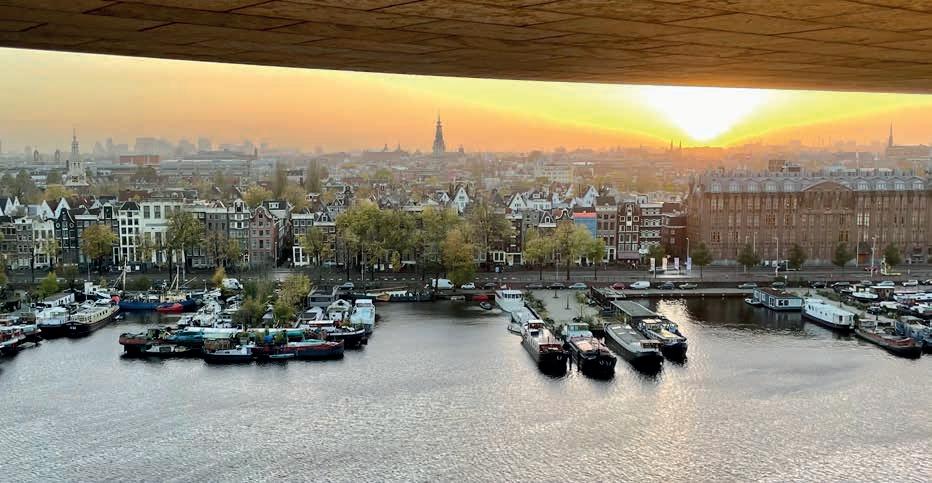
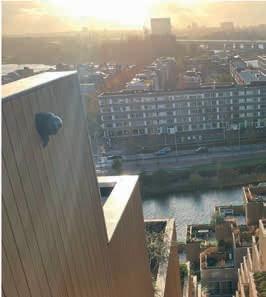
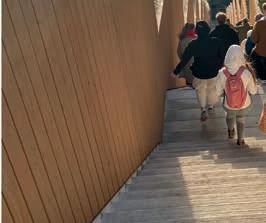





Lindsay Bremner, Ripin Kalra
is a module that runs across a number of Masters courses: MA Urban and Regional Planning; MA Urban and Regional Planning (RTPI Professional Apprenticeship); MA Urban Design; and MA Sustainable Development and International Planning. It aims to explore the key theoretical arguments of sustainable, resilient urban development and climate urbanism, and to empower students to contribute to the development of sustainable and resilient practices in their future professional lives. In the second assignment of the module, students are asked to communicate a planning strategy, in this case, the London Boroughs Green and Resilient Action Plan, in a creative way to reach a particular audience. A selection of the work is featured here.


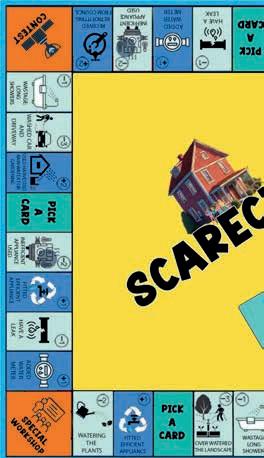























PROFESSIONAL STUDIES FORMS an integral component of all courses across the School of Architecture + Cities at both postgraduate and undergraduate levels. Our role is to help students develop ways of working together and build an understanding of their role in the complex landscape of practice, whatever their subject focus.
The nature of working and practicing within fields of urban design, planning and strategy means that students are expected to contribute to society in a variety of ways when they move into the workplace. Professional studies is an opportunity to develop working practices with colleagues, in addition to cultivating an appreciation of personal, economic and intellectual well-being.
Professional practice and ethics is drawn out of the courses in a variety of ways from design to
contextual studies. For example, undergraduate architecture students take a two-week work experience placement at participating design practices; a live design studio is included within the Master of Architecture [Part 2] programme and will be the basis for developing a live design practice more broadly throughout the school; while the PG Diploma Professional Practice in Architecture [Part 3] is the largest such course in the UK.
Supported by staff and professionally-practicing teaching fellows, the symbiosis between teaching and practice is further cemented at this important stage of professional development for architects by recent course graduates becoming Part 3 Champions and mentoring current postgraduate and undergraduate students.
Alastair Blyth Assistant Head, School of Architecture + Cities
RIBA Part 3
Susanne Bauer, Wilfred Achille & Alastair Blyth
THE SCHOOL OF ARCHITECTURE + CITIES runs the largest RIBA Part 3 programme in the UK. The students come from a wide variety of backgrounds including overseas schools of architecture. Architects who trained outside the UK also attend the course to gain an in-depth understanding of the complexities of UK practice.
Following the requirements of the ARB/RIBA Professional Criteria, Part 3 is structured as a series of building blocks with clear assessment points throughout the year. The lectures, delivered by industry experts, allow students to balance attendance with work commitments and are recorded for easy future access.
The students' personal backgrounds, the types and number of practices represented on the course, along with the tutors and examiners gives the course an unprecedented reach into the architectural profession. This enables the course both to draw from the breadth of practice experience as well as contribute to it.
The Part 3 Course was validated by the RIBA for a further five years in November 2022. The Visiting Board gave it Commendation, citing its scope and delivery, dedicated Chair of Professional Practice and dedicated administrative support. It was revalidated by the University in 2018.
Students’ professional development in the workplace is supported by a team of 40 professional tutors – all architects in practice – who provide one-to-one tutorial guidance on project-based coursework. Professional examiners consistently comment on the high, critical standard of the coursework which we attribute to the structured tutoring system where students are challenged to think about practice differently.
Susanne Bauer
Wilfred Achille is Co-Course Leader. Wilfred completed a major study on Broadwater Farm, Tottenham after the eighties riots. Founder of Mode 1 Architects specialising in estate remodelling projects and urban regeneration, he is developing new Turn-key solution business models for architectural practice.
Alastair Blyth is Assistant Head of School and Co-Course Leader. He spent ten years in the Directorate for Education and Skills at the OECD developing a research programme on learning environments. Publications include books on Briefing (Routledge, 2001, 2010); and education environments (OECD 2009, 2012). He collaborates with architectural practices in Sydney and Mexico on school building projects, and is part of an international project investigating Innovative Learning Environments and Student Engagement run by the University of Melbourne.
Susanne Bauer is Senior Lecturer in the Professional Practice in Architecture and the Architectural History and Theory courses. She has practiced in offices in the UK and Germany, including Foster + Partners and AHMM, and previously taught at Norwich University of the Arts and Birmingham City University.
Lecture-based Modules
The two lecture-based modules are delivered during the first semester. The lecture programmes are delivered by differing industry experts, including construction lawyers, construction managers, architects and surveyors, and are
repeated to allow students to balance attendance with work commitments. Lectures are video recorded for easy future access. Each series concludes with an open book written exam.
Architectural Practice Management
This module is delivered as an intensive short course in January with a written examination held in May. The 12 lectures cover general management, marketing and practice management, as well as managing health and safety, different forms of architectural practice and the role of the professional and regulatory bodies.
English Law, Regulations, Construction Procurement and Contracts
This module is delivered as a programme of evening lectures from September to December with a written examination held in January. The module starts with an overview of the English legal system, the regulatory framework that architectural practitioners work with, the procurement of construction projects, the range of contracts used in practice and dispute resolution. Throughout the course students are encouraged to place the issues covered in the context of their practice as well as other experience they will have had.

These are supported by a team of 40 professional tutors – all architects in practice – who provide oneto-one tutorial guidance and act as the students’ professional studies advisors for the year. Tutors arrange a mix of group and individual tutorials and additionally provide individual advice by email where needed.
The Professional Case Study
The aim of the module is to bring together student’s knowledge of practice including management, legal frameworks, procurement and critical analysis in the context of a construction project, drawing substantially on their own experience. It aims to build on the theory studied in the lecture-based modules, and provide an opportunity to make professional judgements. The case study covers the practice, the design team, appointment, regulatory framework, procurement, and the construction stage. Students are asked
The work-based modules are also supported by a lecture programme. Students may defer submission of the coursework for the work-based modules for either six or twelve months to enable them to respond to their workplace context.
to analyse their project against best practice, and make recommendations for future practice based on their analysis.
Students submit a draft case study in March and receive formative assessment and feedback in April. The final coursework is submitted in June and assessed in July. Guidance is given on preparing for the oral examination which takes place in September.

Work-based Modules contd
Professional Development and Experience Oral Examinations
This work-based module tracks and supports the student’s professional development in the workplace. A student’s professional development is discussed with their Professional Tutor who provides guidance on the professional Curriculum Vitae and the Career Evaluation as well as guidance on preparing for the oral examination. Coursework, comprising the CV, Career Evaluation and PEDR sheets, is submitted in June and assessed in July. Students are required to complete PEDRs for the duration of the course and the PEDR sheets are reviewed on a quarterly basis.
Oral examinations for both modules take place in early September, with interviews generally lasting 45 minutes. Professional Examiners are paired and will see six students over a day. Their role is to assess the candidate’s performance at oral only and the interviews are based on the Professional Case Study and the Professional Development coursework submitted. The written coursework will have been marked already and the examiners will see the feedback given to students.

Live Design Practice introduces innovative ways of working collaboratively across sectors, leveraging our multidisciplinary skills within academia and applying them to real interventions for the benefit of communities. This process fosters an understanding of the complex relationships between different stakeholders while introducing novel practices that make broader participation exciting, engaging and empowering. Live Projects enables deep reflection on the interaction between spatial, political, economic and social factors in relation to our lived experience, allowing us to approach issues and ask
openstudiowestminster.org/beyond-studio/live-design-practice/
Cody Dock
Cody Dock is a social enterprise and charity in east London which works with volunteers to eco-restore and clean up the river Thames. The University of Westminster's previous year’s Live Project ‘The Growing Space’ has become the beating heart of the Cody Dock's community, education and social space, where weekly schools visits and adult therapeutic gardening sessions organised as part of social prescribing are hosted. Subsequent cohorts are benefitting from the project which has been nominated by the Architectural Journal for a small projects award.
This year, MArch studio DS20, led by Maria Kramer with Corinna Dean, designed and developed the QHT-funded ‘The Floating Hide’, floating bird-watching pontoon codesigned and -developed in collaboration with WebbYates Engineers and Nicholas Alexander. Constructed from
questions to understand a real situation. We gain direct, hands-on experience, enhancing and broadening our range of skills and develop confidence through engaging with stakeholders and construction professionals, while leaving a legacy to the community. Live projects form a tool for research, combining often separated roles of teaching, researching and practicing and providing a great opportunity to combine and benefit each field. We are using Live Projects to reflect on its use in exploring concepts of experiential learning theories, and tacit and embodied knowledge dynamics.
cedar timber with modular lightweight hessian panels, the structure sits on reclaimed pontoons.
Undergraduate studio BA DS(2)2, led by Natalie Newey with Matthew Stewart, collaborated with YesMake to develop interventions for the local community in Canada Water using reclaimed materials.
The tangible, physical aspect of projects connects with a wide audience and supports local communities, while being involved in all design and construction stages promotes embodied knowledge for both students and stakeholders, bridging the gap between design and making. The most valuable learning experiences have come from the collective effort and experience shared between students, tutors and our many collaborators.
Thanks to:
Wilfred
Brodeala, Harry Charrington, Alexander Fleming, François Girardin, Jacques Leonardi, Will McLean, Simon Myers, Mirna Pedalo, QHT Fund, Nick Runeckles, Shahed Saleem, Jordan Scammell, Daniel Scroggins, Ro Spankie, Dr Watson, Steve Webb, Camilla Wilkinson, Julian Williams




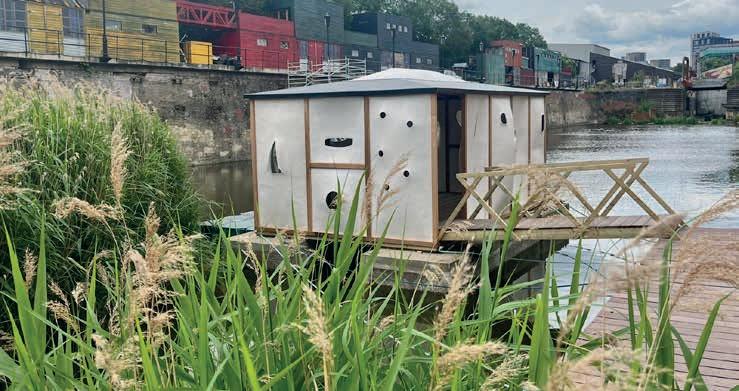












THE SCHOOL OF ARCHITECTURE + CITIES was created in 2018 as part of a University-wide restructuring exercise. It is part of the College of Design, Creative and Digital Industries (DCDI), facilitating collaboration with the Westminster School of Arts, the School of Media and Communication, and the School of Computer Science. The School of A+C hosts a wide range of disciplines engaged in the design of urban environments. It includes architecture, interior architecture, tourism and events, transport studies, and urban design and planning. This diversity is taken as an opportunity for the cross-fertilisation of ideas between built environment disciplines in ways not possible at many institutions in the UK. In line with the University of Westminster, the school’s policy is to encourage research-informed teaching, with the aim of enriching the student learning experience.
The school has a strong international reputation for research, knowledge exchange and public engagement, and hosts several research centres and groups. These entities are organised around the school’s recognised strengths, values and areas of impact. Our research and knowledge exchange centres are the Active Travel Academy (ATA), the Centre for Air Traffic Management Research (ATM) and the Centre for the Production of the Built Environment, (PRoBE), the latter shared with the Westminster Business School. These centres are supported by grant funding and generate the major share of the school’s healthy research and knowledge exchange income. Our research and knowledge exchange groups are Architectural Humanities, Emerging Territories, Design
Practices, Place and Experience, and Transport and Mobilities. Research active staff and doctoral researchers elect to join at least one of these groups, whose role is to develop the members' capacities and activities, to provide research mentoring and to encourage collaborative research within the group and across groups. Research and knowledge exchange in the school is coordinated by a Research and Knowledge Exchange Committee chaired by Professor Lindsay Bremner and, since 2019, the school has also provided leadership for the university-wide Sustainable Cities and Urban Environments research community.
One of the most important cycles in the research calendar in the UK is the Research Excellence Framework (REF) evaluations that take place every six to seven years. The next REF will take place in 2029, when Dr Davide Deriu will co-ordinate the school’s submission. In 2021, the school submitted 77 members of staff, 159 research outputs and 5 impact case studies. It was rated 7th in the country for research power, a measure of the number of people submitted and overall quality of research. Our impact case studies were also assessed very highly. This reflects the excellent quality and quantity of research being undertaken in the school.
The RKE Committee runs a bi-weekly seminar series throughout the year and hosts inaugural professorial lectures. For more information about ongoing events and outputs by our research and knowledge exchange community visit:
http://www.openresearchwestminster.org/
Professor Lindsay Bremner SA+C Director of Research and Knowledge Exchange
Selection of Posters for the Architecture + Cities Research Forum series

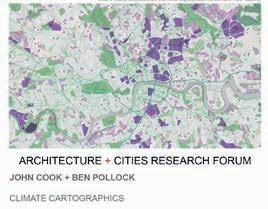












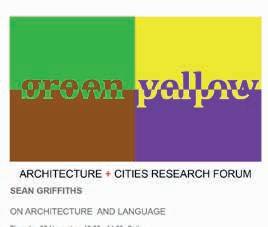
Members of the Architectural Humanities Research Group address critical questions about architecture and its historical, social and cultural contexts by engaging with a range of humanities-based methods, including interdisciplinary approaches that bring together arts and sciences.
Convened by Davide Deriu and Kate Jordan
The Emerging Territories Research Group focuses on societal and environmental challenges faced by cities and territories in relation to evolving notions of sustainability and resilience, climate change, healthy cities, governance, diversity and social inclusion.
Convened by Krystallia Kamvasinou and Giulio Verdini
The Making and Practice Research Group brings together award-winning design practitioners and leading academics who conduct innovative research through the process of practice and making. Collectively, their expertise spans the fields of representation, fabrication, experimental building projects, and environmental design.
Convened by Will McLean and Victoria Watson
The Place and Experience Research Group focuses on tourism, events and leisure research with specialisms in: City Tourism, Mega Events, Urban Parks, Destination Experiences, and Sustainability.
Convened by Stroma Cole and Ilaria Pappalepore
The Transport and Mobilities Research Group covers a diverse range of aspects of urban movement, including: City Mobilities, Active Travel, Freight, Infrastructure Investment, Networks, Accessibility, and Transport Equity.
Convened by Gerald Gurtner and Enrica Papa
The ATA is an interdisciplinary research and knowledge exchange centre that currently leads projects funded by organisations including NIHR, DfT, and TfL. It hosts the Active Travel Studies journal and organises events including the regular Walking and Cycling@Teatime seminars.
Director: Rachel Aldred
CATMR builds on more than 20 years of research into air traffic management, for which the University of Westminster is well known. Working with academia, industry and international organisations, the group is active in projects funded by Clean Sky 2, SESAR and Horizon Europe.
Director: Andrew Cook Co-Director: Luis Delgado
ProBE provides a research hub, a forum for debate and discussion, and a focus for interdisciplinary and international activity related to the Production of the Built Environment as a social, environmental and historical process.
Director: Rosa Schiano-Phan
Ripin Kalra
Water scarcity in cities and the role of urban waterbodies and other nature-based solutions is a critical area for sustainable planning research. Despite being backed by several UN Sustainable Development Goals, much research and implementation work remains to be done on the ground. At the same time, the limitations of centralised utility-led models for delivering water and wastewater services are coming under close scrutiny with a push to explore more sustainable, decentralised models of community-led delivery of such services.
One topic of investigation has been the water and wastewater practices within urban areas. Focusing on regions of lower economic development but spanning all areas of the globe, this research aims to understand and develop techniques to tackle water management suitable to specific territories as part of a wider network of research.
Starting in the state of West Bengal, the research trip to India transected the country, stopping in towns to observe water and wastewater management practices on the journey west. Despite beginning in the state described as having the most abundant number of waterbodies of India, the latitude the research investigation followed towards the state of Gujarat, meant crossing one of the country's driest belts.
In Kolkata, the state capital of West Bengal, waterbodies are valued by ordinary citizens as a place to farm fish, an important part of their diet. This need for sustenance also helped to sustain the waterbodies against other pressures of urbanisation. Further west, the city of Sambalpur is home to the Hirakud Dam. Built in the 1950s, it has
Funded by Research Office Research Development Award (RDA) 2022-24
created one of the largest human-made lakes in the world and has transformed one of the driest parts of India into a rice exporting area and a significant recreational zone.
A different element of water management was demonstrated in Raipur, the capital of Chattisgarh state, where examples of public-private partnership were visible in the repair and management of an urban lake. While the long tradition of intricately designed step-wells for water storage were present in Gujarat state.
This picture of how urban waterbodies can be put to various uses, managed through different means, and provide wider social and environmental benefits forms the base for further research and collaboration with colleagues from a number of international organisations and research centres.

Davide Deriu
THIS COLLABORATIVE PROJECT is concerned with the historical and cultural significance of the photobook as a form of urban narrative. Jointly led by Davide Deriu and Angelo Maggi (Università Iuav di Venezia), and involving a number of international scholars, it culminated in the publication of an edited book, Picturing Cities: The Photobook as Urban Narrative (FrancoAngeli, 2024), which illustrates a range of aesthetic attitudes as well as analytical approaches to the representation of Western cities.
What is a photobook? The term refers to various illustrated publications, in which photographic images play a central role. Often resulting from the collaboration between photographers, editors and graphic designers, they make it possible to read and interpret specific subjects – including cities – through curated sequences of images, often in

conjunction with literary or critical texts. Throughout its history, this versatile form of publication has allowed photographers to depict urban environments in widely different ways.
Although the photobook has been integral to the construction of urban narratives since the earlytwentieth century, its significance for the experience and perception of cities has so far been rarely investigated. Picturing Cities addresses this gap by mapping the shifting nature and function of photobooks on to the history of urban representation. The collection of essays from Europe and the Americas (published digitally in Open Access) opens up a multidisciplinary field of research with the potential to expand into further geographical and cultural areas.
Giulio Verdini
Shengkang Fu
AN INTERDISCIPLINARY DESIGN workshop on urban conservation in Qingdao, China, was organised by Xi’an Jiaotong-Liverpool University and ILAUD (the International Laboratory of Architecture and Urban Design), with support from the state-led developer Qingdao RIM Group and Qingdao Baiyang Zhuozheng. Partner institutions included Tongji University and the University of Westminster. The workshop is part of a larger research initiative led by WHITRAP Shanghai (the World Heritage Institute of Training and Research for the Asia and Pacific Region under the auspices of UNESCO) aimed at rethinking urban heritage conservation in light of current urban management challenges, such as climate change, technological innovation, overtourism, and selective remembrance. The University of Westminster is an official partner of WHITRAP and is in the process of joining the ‘International Network for Urban Heritage Conservation in Higher Education Institutes.’
The study area has undergone significant transformation in recent decades, with the addition of dense modern residential compounds over the old urban morphology, which still features a scattering of historic Japaneseand German-style courtyard houses and villas. These buildings now stand empty and are in need of renovation and re-use. During the workshop, scenario planning methodologies were applied to reveal potential pathways for sustainable local development. Due to the lower real estate and tourism pressures in the area compared to other central areas of Qingdao, the risks of gentrification and tourism congestion are less likely. Local developers are, therefore, more open to testing innovative approaches to enhance the area's environmental and economic resilience through nature-based solutions and sustainable tourism. The scenarios developed provided an overview of sustainable place-making strategies that could be
applied in similar semi-central urban settings. An action plan, comprising short-term tactical interventions and long-term transformative design strategies for the site, was proposed and will be documented in an ILAUD Working Paper (www.ilaud.org). The publication will highlight the necessary skills and competencies in urban conservation and address what is currently missing to achieve truly sustainable and resilient urban transformations.







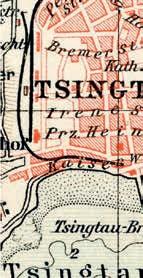
PROGRESSIVE HERITAGE INTERVENTIONS

29.June - 6 July 2024
Qingdao, China

Funded by UCL Museums
THIS MIXED REALITY installation at the Grant Museum of Zoology is a funded commission that has developed from the previous QHT-funded ‘Reimagining Coral Reefs’ projects.
Coral reefs sustain 30% of all ocean species, and their degradation represents a stark reminder of the climate crisis. The study and preservation of coral reef habitats is vitally important to planetary health, and humanity in general. The data gathered from corals today is complex and multi-sensory, but corals are often still presented in conventional ways, including in museum settings. Coral specimens in museums can sometimes reinforce the misconception of corals as static and colonised objects, rather than as animals that form the foundation of marine ecosystems.
The installation reconstructs real-world coral habitats virtually in a location-specific experience, where visitors will be able to immerse themselves in a virtually ‘flooded’ museum, transformed into a seabed, where they can ‘dive’ amongst healthy, degraded and restored coral reefs, through a multi-species perspective. The VR activity is integrated into two pieces of bespoke museum ‘furniture’ and presented alongside the Grant Museum’s own collection of coral specimens and 3D prints, and is supported by a public events programme.


The installation/exhibition forms part of the ongoing output of a nascent research collaboration called Datascape Realities, which brings together architects, designers, scientists, NGOs, industry partners, and cultural institutions. The research is focused on a multi-disciplinary approach to real-world data translation and visualisation using a combination of CAD, graphics, segmentation and game design platforms, transforming real-world photogrammetry, microscopy imaging and MRI scans into virtual environments, from where scientific data can be viewed, experienced and confronted from a new perspective. Ultimately, the research questions how mixed reality technologies, environments and experiences can be designed to communicate critical research data that is otherwise imperceptible, inaccessible or intangible.
Ersilia Verlinghieri
(LTNs) are transport interventions that limit through-traffic motor vehicle access in a set of residential streets. Their aim is to make walking, wheeling and cycling safer and more comfortable, and make driving less convenient.
There is some promising evidence of the benefits of LTNs, including decreased car ownership and use, increased active travel, and a reduction in street crime and road traffic injuries. However, there is also concern about adverse impacts, for instance on disabled people who need to use cars and whose journeys will be longer, or for residents on boundary roads who may experience the negative consequences of diverted motor traffic.
Funded by the National Institute of Health and Care Research, the ‘Low Traffic Neighbourhoods in London’ project uses both quantitative and qualitative methods to examine the benefits, harms and experiences of new
Funded by National Institute for Health and Care Research (NIHR) LTN schemes and inform the future of similar transport interventions.
One key component of this work is ‘go-along’ interviews with residents who live in or nearby an LTN. During the go-along, residents are asked to guide researchers around their local area; they discuss their daily experiences of living within or near the low traffic neighbourhoods and how the scheme impacts them and their journeys, both positively and negatively. The method allows researchers to better understand the inclusivity of the schemes, such as the experiences of disabled people and older residents who have diverse travel needs and might use roads differently. At the same time, go-along interviews enable researchers to highlight potential positive or negative impacts not easily captured by quantitative data or traditional interviews, including changes in perceptions of safety of the local environment or changes to the way public space is used.

Jamie Furlong
THE ROAD SAFETY TRUST has a vision for zero deaths and injuries on UK roads. Yet, DfT statistics suggest that road casualties are showing signs of returning to preCOVID levels, with 135,480 casualties of all severities in 2022.

One policy that aims to reduce the number of (polluting) motor vehicles in urban areas is Clean Air Zones (CAZs). CAZs, introduced by local authorities, charge owners whose vehicles do not meet emission standards. There are eight operational CAZ in England, each with the potential to make major impacts on transport in urban areas, including on the level and distribution of motorised traffic as well as participation in active travel.
This project will provide key evidence on any road safety impacts of CAZs and Low Emission Zones (LEZs) as well as how these vary across different schemes and by travel mode, road type and injury severity. We will assess whether there is a change to the number of road traffic injuries (RTIs), compared to expected values (based on control areas), but also the extent to which there are fewer fatal and serious injuries. This evidence is important both as these schemes cover a substantial number of urban areas, but also because they are planned for more areas, including Manchester and possibly Cardiff.
This project will quantify benefits and provide evidence for the cost benefits of implementing future schemes, while quantifying any disadvantages (such as displacement of injuries). Analyses of policy documents will allow us to assess how seriously road safety is taken in the planning and monitoring of these schemes, and collaboration with local stakeholders will allow consideration of how any negative impacts can be minimised. These findings will be valuable to individual road users through the targeting of support and other infrastructure measures to keep them safe when using the roads.
Harrie Larrington-Spencer
ACCESS CONTROL BARRIERS are commonly installed on traffic-free walking, wheeling and cycling routes. The logic behind these barriers is that legitimate users – such as those walking, or cyclists on a two-wheeled bicycle – can get through, while illegitimate users, like those on motorcycles, cannot. However, in reality, this also excludes disabled people who use wheeled mobility aids such as wheelchairs, mobility scooters and adapted cycles. This exclusion from traffic-free routes matters because they are often critical components of active travel networks.
This research aims to understand what happens on trafficfree routes when access controls are removed, both in terms of changes to levels of antisocial use but also with regards to changes in the experiences of route users, specifically disabled users, and whether improved route accessibility impacts levels of mobility and related access to local communities and social participation. Recognising that access controls are often implemented after complaints from nearby residents, the research seeks to understand local residents' experiences of access control removal.
Funded by Motability Foundation
To achieve this aim, the following methods of data collection will be used:
▪ Machine learning sensors, provided by Vivacity, to monitor levels of legitimate and antisocial use on traffic-free routes pre (12 months) and post (24 months) access control removal. These will be used in 6 traffic-free routes where local authorities agree to work with us.
▪ Go-along interviews with disabled residents pre- and post-access control removal to understand impacts upon mobility.
▪ Resident survey post-access control removal to understand broader local experiences.

BRIGHT: Changing transport policy makers’ behaviour
Tom Cohen (University of Westminster) Clemence Cavoli (UCL)
Kristian Steensen Nielsen (Copenhagen Business School)
THE CLIMATE EMERGENCY requires urgent action, but large swathes of transport policy is at best inconsistent with climate targets and Sustainable Development Goals, or at worst takes us in the opposite direction. What prevents transport policy makers from choosing more sustainable options? How do we encourage them to make decisions aligned with climate goals? To address these questions we are using behavioural science to develop interventions aimed at influencing the decisions of transport policy makers in the UK and possibly beyond. This has been supported by a seed grant from the School of Architecture + Cities.

First, we ran a workshop in April 2024 at which experts from various fields helped us to define the parameters of the intervention, drawing on behavioural science principles, methods and frameworks, such as the COM-B model and Behaviour Change Wheel (BCW).
This led to the development of a pilot intervention which we ran in June 2024. It took place at UCL’s innovative PEARL facility in east London and involved 12 volunteers who currently are or who have been transport policy makers. The pilot began with a ‘behavioural diagnosis’ questionnaire designed to capture participants’ perceptions of the barriers they face in attempting to deliver more climate-friendly policies. It then featured video immersion, a climate gallery, a serious game and motivational interviewing, each intended to overcome one or other obstacle to the desired behaviour. The pilot went well and produced a range of useful findings for the future development of interventions.
An application for a larger grant is pending and the intention is to work towards a more rigorous intervention design based on methodical behavioural diagnosis and use of innovative visualisation software.
Enrica Papa
Sabina Cioboata
Tom Cohen
Tommy Chan
ACROSS EUROPE, CITIES are aiming to reduce their reliance on car-based mobility. Towards this goal, over the past three years the €1.5 million EU-funded project Ex-TRA has championed a playful, experimental approach to urban redesign, providing a low-cost, low-risk way to test ideas and collect feedback from citizens. It has explored street experiments (or intentional but temporary changes in street use), through an iterative process of temporary interventions, citizen consultation and adaptation, with the aim of helping policymakers navigate urban transformation with more confidence and agility with the aim of accelerating or catalysing the transition to post-car cities. Insights generated through this approach include: combinations of physical design and regulation to increase diversity and inclusivity of uses and users in city streets; transport and land use conditions to enable walking and cycling accessibility in city districts; shared, micro-mobility and freight delivery options; strategies for change that can accelerate the transition towards a ‘post-car’ city.
The project examined and learned from transition experiments in six European cities: Amsterdam, Bologna, Milan, Ghent, Munich and London. Using a series of tools developed by Ex-TRA, the cities experimented with temporary interventions to test new ideas, generate feedback from cities, and understand what works and what doesn’t in their respective contexts. The project produced a number of innovative tools:
1) StreetECHO: a platform for citizen engagement in street transformation processes, consisting of an online survey tool, a data visualisation tool, and a comprehensive protocol for community workshops.
2) GOAT (Geo Open Accessibility Tool): which takes a data-driven approach to assessing the quality of accessibility by walking and cycling.
Funded by Joint Programming Initiative, European Commission
3) IAPI (Inclusive Accessibility by Proximity Index): which assesses how accessible essential services are to various user groups.
4) D4AMS (Dashboard for Alternative Mobility Scenarios): a modelling platform which enables policymakers to explore radical future scenarios involving street closures, bike-sharing and car-sharing.
5) Change Workshop Protocol and Conversation Starter Deck: two tools aimed at fostering knowledge sharing and the effective governance of street experiments.

JUST STREETS IS an £11 million project funded by the European Union's Horizon Europe programme, running from January 2024 to June 2027. 32 international partners are collaborating to empower twelve cities to transform existing streets into just, equal and human-centred spaces for active mobility. JUST STREETS is not only about change; it is about a transformative and systemic shift in perspective when planning and designing public space in cities.
The project focuses on (re)developing streets shaped by active mobility that are sustainable, safe, inclusive and just for all citizens. The project rationale is rooted in the idea that a shift from streets for the primary or exclusive use of cars towards street space for more active modes of mobility must be led by prioritising the needs and visions of all, particularly those social groups that have been traditionally under-represented in urban planning and design processes. This includes, in particular, women, children, the elderly, migrants, LGBTQI+ individuals, and people with disabilities or special mobility needs.
The project also considers justice and inclusivity in street planning and design, making it complementary to ambitions to foster resilient communities with the primary objective of supporting neighbourhoods and cities to reach their climate neutrality goals. As such, the project is aligned with the goals of the EU Mission Climate-Neutral and Smart Cities.
JUST STREETS consortium of 32 partners span academia, the public and private sectors, with research and knowledge transfer expertise, technology and service providers, organisations, and forward-thinking public authorities. The cities at the heart of the project will be supported to implement innovative interventions and transform their streets with broader goals to catalyse systemic transformation in urban public space planning and design. Subsequently, critical learnings and knowledge will be shared with other cities across Europe. The cities involved in the project include Amsterdam, Braga, Haifa, Kozani, London, Milan, Riga and Zaragoza.

PHD STUDENTS in The School of Architecture + Cities are engaged in wide-ranging areas of research that fall within and across the School’s five research groups: Architectural Humanities; Emerging Territories; Design Practices; Place and Experience; and Transport and Mobilities. Recently completed theses have made pioneering contributions to global scholarship in tourism, climate change, transport, urban planning, heritage and adaptive reuse.
Those who completed this year include: David Mathewson whose thesis is entitled,‘Historic Institutionalism and Urban Morphology in Jakarta: Drawing the link between flood policy and impacts on urban form & social sustainability’; Asa Thomas with his thesis, ‘Mediating Mobility at the School Gate: Interpreting London's School Street schemes’; Mengran Zhu, thesis entitled, ‘Rethinking urban governance in China's urban regeneration: Case of art space development in Chengduand’; and Dawn Rahman
with her thesis entitled, ‘Mad or Magnificent? Mothers who cycle with their children in the UK’.
In addition to standard-route PhDs, we continue to supervise students working towards PhD by Published Work and PhD by Practice. These models of doctorate offer routes into postgraduate study for outstanding professionals with an established body of work, and have also helped to forge valuable connections with industry. Recently completed PhDs by Published Work include ‘The Future of the Already Built’ by Sally Stone; and ‘The Real Thing: An investigation into authenticity and the substance of place’ by David Littlefield.
This year we welcomed 12 students, 5 of whom received Architecture + Cities studentships and one who was awarded a TECHNE studentship.
For further details about our PhD programme, visit: https://www.westminster.ac.uk/study/postgraduate/researchdegrees/thinking-of-doing-a-phd
Kate Jordan PhD Coordinator
PhD candidates, 2024
Wisam Abu Ghosh
Hala Alnaji
Katherine Bartlett
Akma Nazar
Hui Ken Chong
Didem Ertem
Minerva Fadel
Karen Fitzsimon
Shengkang Fu
Sugandhi Jayaraman
Prajakta Kalamkar
Anita Lateano
Joao Matos da Silva
Andreea-Laura Nica
German Nieva Mesas
Simona Palmieri
Dulce Pedroso
Marzena Piotrowska
Jessica Porritt
Fred Raphael
Rofayda Salem
Deborah Schneiderman
Rick Schumaker
Rachel Simmonds
Guy Sinclair
Xinyao Song
Lorna Stevenson
Ozge Suvari
Kanaka Dhirendra Thakker
Cristina-Alexandra Trifan
Carine Woiezechoski
Creating building materials from palm tree by-products: (left) Coconut breaker women on their way to collect Babassu palm tree coconuts; (top centre) Babassu coconut shells, rich in lignocellulose; (bottom centre) Lowtech biocomposite fabrication using Babassu fibre reinforced with natural rubber; (right) Cutting samples in preparation for testing mechanical properties
German Nieva Supervisors: William McLean, Adam Thwaites, Lindsay Bremner
Hyperlocal Construction Materials for use in Amazon’s Remote Locations
THE RESEARCH CONCENTRATES on how to develop architectural strategies to build in rural locations in Brazil. With an initial focus on the Cerrado biosphere and the Babassu palm tree, the study aims to identify regional and local opportunities to develop in-situ construction systems and materials. The key objective is to create a resilient approach to building in remote locations, taking into consideration future changes to landscapes resulting from climate change, the growing economic challenges to access construction materials, and consolidating local and regional networks of collaboration within the region. Local techniques and skills are central to the research, while also identifying new methods and where appropriate making use of the latest, and increasingly more accessible, technologies.
Positive approaches to tackling the ecologic crisis tend to look at rethinking our relationship to the landscapes we inhabit, as opposed to the deep-rooted separation of humans and local nature within industrialised economies. This research advocates an approach that is

geographically rooted in an area, rethinking what materials can be extracted and bringing the fabrication closer to the economies they serve, minimising supply chains and establishing a closer relationship between communities, economy and ecology. Localising and joining up parts of the construction process imparts the potential to reduce carbon emissions with the use of locally sourced and manufactured sustainable materials.
Working in the Amazon presents several complexities: access to rural communities can be problematic; and the transport of materials and skilled builders is costly and often unviable. Within this context, hyper-local architecture is seen as a valid solution. My initial research has identified the potential to develop a biocomposite from Babassu-fibre reinforced with natural rubber. Both substances grow naturally within the tropical rainforest and the Cerrado, and hold the potential to be replicated in several regions across Brazil. Other material opportunities are being explored, such as Babassu fibre and Babassu oilbased resin composites.



Anita Lateano
Supervisors: Stroma Cole, Lindsay Bremner, John Zhang
THE 2018 IPCC REPORT predicts that if we reach 2ºC warming, all coral reefs will be lost by 2100. Whereas marine conservation has historically focused on passive habitat protection, demand for active restoration has been growing. Consequently, the number of coral reef conservation projects using artificial reefs, coral farming practices and even genetically modified coral has increased globally (Bostrom-Einarsson et al. 2020, Higgins, Mataxas & Schelbling, 2021). However, many of these conservation practices are short-term and lack clear monitoring and reporting, putting into question their viability for meaningful restoration (Bostrom-Einarsson et al. 2020).
This research looks specifically at coral reef conservation practices in Bunaken National Park, north Sulawesi, Indonesia, home to a number of coral restoration projects and an area famed globally as a site of high coral reef
biodiversity. Across Indonesia, coral reef conservation practices are organised by a diverse range of governmental, NGO, private and community-led organisations, but less than a fifth of them have any kind of post-installation monitoring framework (Razak et al. 2022).
Through this research, this new industry will be approached anthropologically to understand the impacts of coral reef conservation within the communities present in Bunaken National Park. By taking a multi-species approach, it aims to understand the role of the reef itself in conservation, alongside marine scientists, NGOs, governments, local and Indigenous communities, private and communityled organisations, as well as the part visitors and tourists play to offer new perspectives on an emerging industry, questioning – and exploring – what is meaningful coral reef restoration, and how we can work together to achieve it.

Didem Ertem
Supervisors: Andrew Smith, Ilaria Pappalepore, Krystallia Kamvasinou
BY VIRTUE OF being sites of leisure, public parks are distinguished from other kinds of public spaces as sites that can afford the conflicting claims to publicity and the mediation of difference in a non-coercive manner (Neal et al. 2015). On the grounds of their preference-based use, public greenspaces are inhabited by urban dwellers who choose to be where they are. Public parks can therefore be viewed as opportune sites where one acquires a casual familiarisation with being in close proximity to different identities without force. Paul Gilroy (2004: 105) conceptualises such learning of public at-ease-ness as ‘conviviality’, an everyday practice of being together that renders exposure to difference unremarkable.
In this thesis, I aim to bring forward a discussion of conviviality in public greenspaces, and the democratic ideals
of public space with a focus on antiracism. In line with this objective, I explore the quotidian practices of multiculture in Finsbury Park. These small-scale civic sociabilities include a wide range of activities and user groups in the form of friends’ gatherings, protests, ball games, free dance lessons, slacklining, and informal community events. Using the lens of conviviality, I study the site-specific formations of inter-ethnic interactions that engage individuals with different ethnic backgrounds in the park. I centre my focus on the ways in which these sociabilities are experienced, perceived and influenced by the socio-spatial composition of the park space. In doing so, I assess how Finsbury Park and the unplanned encounters between different users it accommodates, can or cannot translate into mutual respect and an easeful attitude towards mediating difference within this particular form of public space.

Jess Porritt
Supervisors: Ilaria Pappalepore, Andrew Smith, Tom Cohen
An exploration of the impact of experience design on the depth and longevity of transformation achieved through participation in ultra-marathons
ALTHOUGH THE PRODUCTION of transformational events and experiences is a core focus of the events industry, the intentional design of transformational experience has received little attention from an academic perspective. What research there is focuses primarily on festival and tourist experiences (Kirillova, Lehto & Cai, 2017; Pung & Gnoth, 2020; Rowan, 2020; Neuhofer et al. 2021; Richardson & Insch, 2023). However serious leisure, extreme and mass-participation sport spaces such as marathons and ultramarathons can also act as transformational eventscapes for their participants (Brymer & Oades, 2009; da Fonseca-Engelhardt et al. 2013).
The aim of this research is to assess the extent to which the design of endurance running eventscapes impacts the depth and longevity of transformation achieved by ultra-marathon participants. Moreover, this study argues that transformation is not a single disconnected moment but a phenomenon that can hinge entirely on the participant’s worldview, past experiences, and motivation. Thus, the secondary aim is to evaluate how the personal, socio-economic, gendered and cultural context of the participant impacts their interaction with endurance running eventscapes and their potential for transformation. Utilising a mixed-method longitudinal approach, this study proposes to identify key moments of transformation within the participant experience of ultramarathons from training through to post-race recovery as well as highlighting barriers to transformation. Using this data an experience design map will be created that enables the production of supportive and inclusive transformational running events.

Kanaka Dhirendra Thakker
Supervisors: David Littlefield, Maja Jovic, Alessandro Ayuso
The Extended Body: Investigating the negotiations between body and space
CHALLENGING THE EXISTING definitions of the body, the thesis introduces a broader concept of the ‘body’ into the discourse of body and space through the concept of ‘The Extended Body’. This is seen as an evolving perimeter that the body constructs around it by using objects and surfaces as ‘Extensions’. The research aims to investigate the efficacy of the Extended Body as a medium by which space is experienced by the body.
Using an autoethnographic research method, I make a case study of my own body: that is the voluntarily displaced Hindu Migrant body. Drawing from cross-disciplinary research, the thesis considers concepts of body and space such as the Hindu mythology of the mangled, non-natural cosmic body ‘Purusha’ (Rykwert, 1996; Lang, 1883) and proposes discarding the ergonometric body as a reference for measure, instead offering the Extended Body as a
dynamic measure of the world. By providing a qualitative and quantitative measure of the world in relation to oneself (Tavernor, 2007), the Extended Body creates the possibility of self-reflection to ask the Hindu philosophical question: ‘Ko ham?’ or ‘Who am I?’ (Javadekar, 1977)
The Extended Body is seen as a micro interior wherein space is ‘produced’ (Lefebvre, H.1991) by the social, cultural and technological processes that inform the choice of extensions. The research draws from the study of prosthesis and phantom limbs to establish a conceptual framework to identify the physical and non-physical extension of the body and the micro-interior. Seeing the Extended Body as more than a network of physical elements, the research aims to devise a new methodology to ‘capture’ the Extended Body through mapping to record the abstract as well as physical extensions.

Laura Nica
Supervisors:
Constance Lau, Jane Pavitt, Kester Rattenbury
THIS RESEARCH IS an intervention into discussions of both the ‘digital’ and ‘technology’ in architecture. It poses questions about emerging forms of future types of digital archives and critiques around the increased use of borndigital material used in the creation of spatial practices –asking what craft, form, gesture and inscription can still do (and be) when faced with risks of imminent obsolescence and incomplete models.
The aim of this thesis is to try to identify and develop new possible frameworks for digital archival procedures, creating an anexact diorama (measurable, yet incomplete/ inexact forms). This would enable a vast, comprehensive and diverse combination of possibilities that offer new readings of 3D files (born-digital material) as tools that bring evidence to the surface of novel methodologies employed while developing complex architectural briefs and projects.
The investigation focuses on the transition from drawing (analogue) to early computing (digital) in the works of Zaha Hadid (between late 1980s and early 2000s), using three case studies. I argue that Zaha Hadid’s novel design practices and transitions from physical to digital cannot be fully explained just by engaging with flat archival surfaces – like writing surfaces (text), architectural surfaces (drawings/paper) or digital surfaces (screens and digital representations) – but require new procedures to capture these invisible ‘tactics’, by treating the three-dimensional
digital files as prototypical ‘reverse-engineering’ artefacts. In the hope to capture, break, fragment, disseminate, layer, translate, test, re-assemble, re-examine and document complexity, the project will involve working with demountable approximations (traces from the remaining digital files – software, hardware, fragments etc) and information from advanced/emergent technologies to form comparable morphological matrices.
Phy-gital assemblages: misfits, hybrids and fragmented models

Wisam Abu Ghosh
Supervisors: Stroma Cole, Ilaria Pappalepore
Empowering Women through Engagement in the Tourism Sector: An examination of international development projects and public policies in Palestinian villages
THIS STUDY FOCUSES on how International Development Projects (IDPs) aimed at boosting tourism in marginalised Palestinian villages in the West Bank and East Jerusalem may empower and develop Palestinian women. By examining both past and present IDPs, it seeks to comprehend the obstacles to, and limitations placed on, women's through tourism to create a useful empowerment paradigm within the Palestinian context.
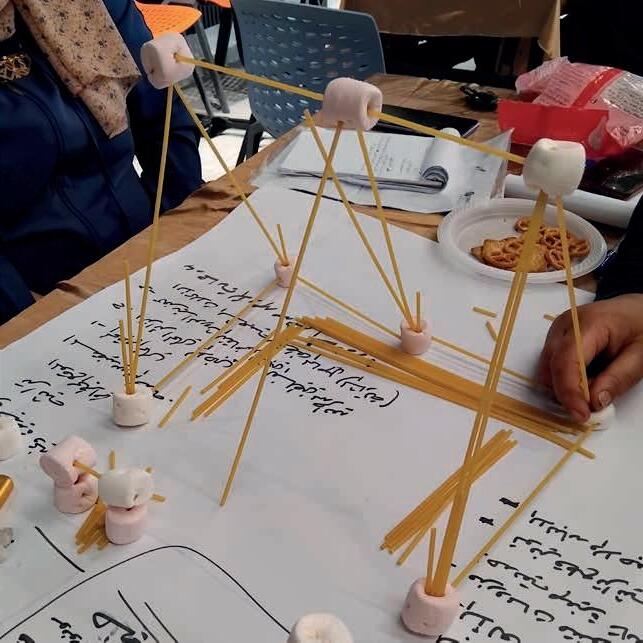
Using qualitative research of projects run by two NGOs and semi-structured interviews with various stakeholders, a method will develop to assess relevant policies and regulations on gender and tourism, comprehend the intersectionality of tourist development, and examine the women empowerment paradigm as a development method in underdeveloped countries.
The empowerment paradigm used by donor programmes like European Union Development Aid and is primarily based on a Eurocentric approach to viewing the world. Drawing from the works of prominent scholars such as Paulo Freire, Amartya Sen, Naila Kabeer, Robert Chambers and Deepa Narayan, the research challenges the status quo and explores how empowerment can be a central approach in development.
The fundamental argument of the research is that when international development programmes are implemented in Palestinian regions with a gender-targeted approach, they fail to take into account the reality faced by women. This reflects how the majority of research and development assistance has been predicated on Western models and most development projects' epistemologies, theories, methods and results are still influenced by Western hegemony and ideology. The obstacles faced by women in the tourist industry are further compounded by the minimal participation of Palestinian women in the industry and the dearth of international tourism-focused projects.
Training women on Agritourism skills as part of an International Development project activity for Supporting the development and creation of micro and small businesses in target communities (Hebron Villages) through technical training and financial support
Guy Sinclair
Supervisors: Lindsay Bremner, Kate Jordan, Victoria Watson
THIS RESEARCH EXPLORES climatic knowledge production as enmeshed in an apparatus of relations between technologies, texts, assemblies and spaces, and seeks to map connections, contiguities, complementarities and distinctions between the dominant episteme of climate science and an alternative way of knowing climate through a non-secular worldview – Catholic ecotheology.
Climate science assembles knowledge across a global infrastructure of sensing, computation and analysis that funnels climate data to a selection of key institutions which, in turn, contribute to the Intergovernmental Panel on Climate Change's Assessment Reports. This process realises a view of planetary climate through a small number of supercomputers, mostly scattered across the Global North. These supercomputing sites simulate planetary climate while depending on a set of highly controlled interior conditions – cooled air and water, carefully calibrated electrical provision and connections to expert scientific labour. By tracing the material-semiotic network that surrounds the supercomputer, the technical, social and cultural modes of Western climate science knowledge production can be explored as situated and processual.
The connections between Catholic ecotheology after the 2015 papal encyclical Laudato Si’ and climate science are manifold. The scientific consensus on climate change was embraced by the Vatican in this text and enfolded into
a view of ‘integral ecology’ or the moral obligations of Christians to practice ‘care for our common home’ of the Earth’s climate. These teachings wholly incorporate climate scientific knowledge and are now being disseminated and practiced within Catholic religious orders as they build, communicate and model lifeways that are consistent with climate care. This doctoral research investigates two sets of scholarly communities (climate scientists and Catholic contemplatives) through the way in which their connected knowledges are produced. This production is shown to be through sited practices, reliant on comparable knowledge infrastructures and socio-material arrangements.
Service connections to the Cray XC40 supercomputer at the UK Meteorological Office, High Performance Computer Facility.

A routine scenario at the author's Mappila home: while the father reads his newspaper on the open veranda, the mother takes refuge behind a wall to have a conversation with him, remaining constantly curious about events transpiring on the street and vigilant of herself and her body
Akma Nazar
Supervisors: Kate Jordan, Davide Deriu, Samir Pandya
Reimagining the Gendered Mappila Home: Spatial speculations on women challenging power structures in the contested home
THE COMMON REPRESENTATION of ‘home’ in popular discourse as a sacred, celebratory space of security and maximum individual autonomy is reductive, masculinist and underplays the extent to which home can be a contested site of conflict and a locus of power relations (Sibley, 1995; Blunt & Dowling, 2006). Set in the Mappila community, a sub-culture of Muslims in the south-western Indian state of Kerala, and focusing on the (spatial) agency of Mappila women, this research attempts to unpack how the gendered spatial programmes of Mappila homes affect power structures and identity construction; it considers how Mappila women performatively reimagine the spatial frameworks of their agency through creative tactics against strategies of power in their daily lives (Lefebvre, 1974; Certeau, 1984; Butler, 1990).
This leads to an exploration of the possibility of reimagining the spatial programme of the Mappila home as a more democratic, gender-equitable space without compromising the religious faith and religiosity of Mappila women.
The emphasis is on the agency of Mappila women, with the architect/researcher simply facilitating the articulation of Mappila women’s design aspirations.
Through a postcolonial, intersectional feminist lens, the research aims to address the interconnectedness of gender, religion, class and age as the multiple axes in the subjugation of Mappila women, and to challenge the misrepresentation of Mappila women in Eurocentric or western scholarship on the ‘Third World Woman’ – a powerless and monolithic subject (Mohanty, 1988; Spivak, 1988/2010; Abu-Lughod, 2013). The research methodology is informed by a hybrid framework combining conventional architectural research tools such as mapping, drawing and archival research (Lucas, 2016), and relational autoethnography (Adams et al. 2015), using qualitative feminist methods including family research (Adams & Manning, 2015) and friendship as method (Tillmann-Healy, 2003), valuing the relationship of the self with others to reflexively co-construct narratives for socio-cultural analysis and understanding.
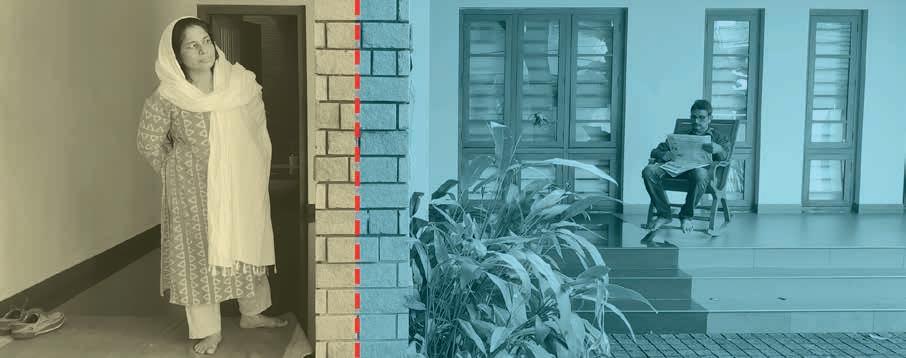
Staff 2023-2024
Wilfred Achille
Yota Adilenidou
Sam Aitkenhead
Dimah Ajeeb
Rachel Aldred
Julian Allen
Catherine Archbold
Alessandro Ayuso
James Baldwin
Russel Bamber
Simon Banfield
Peter Barber
Scott Batty
Susanne Bauer
Ross Bennett-Cook
Carine Berger
Woiezochoski
Sabina Blasiotti
Alastair Blyth
Stefania Boccaletti
Tatjana Bolic
Mehrdad Borna
Roberto Bottazzi
Andrew Boughton
Anthony Boulanger
Lindsay Bremner
Florian Brillet
Christopher Bryant
Tom Budd
Toby Burgess
Mengqiu Cao
David Carringnon
Clare Carter
Paolo Cascone
Ian Casey
Harry Charrington
Kate Cheyne
Hayley Chivers
Yiorgios Christofi
Conor Clarke
Tom Cohen
Stroma Cole
Jim Coleman
Brian Constant
Hannah Constantine
John Cook
Andrew Cook
Matthew Cousins
Brian Crawford
Paul Crosby
Beth Cullen
Fatai Dabiri
Wajiha Dadabhoy
Miriam Dall'Igna
Christopher Daniel
Corinna Dean
Dusan Decermic
Luis Delgado Munoz
Nigel Dennis
Davide Deriu
Zoi Diakaki
Richard Difford
Orsalia Dimitriou
Lucy Dinnen
Christopher Dite
Izabela Dozic Frost
Kirti Durelle
Liz Ellston
James Engel
Demien Erber
Didem Ertem
Francisco Esteras
Elantha Evans
Helen Farrell
Amr Fawzy
Stefanie Fischer
Annette Fisher EvansAnfom
Tomas Fiszer
Alex Fox
Ana Gatóo
Anna Gillies
François Girardin
Simone Gobber
Inan Gokcek
Nasser Golzari
Alisdair Gray
Sean Griffiths
Thomas Grove
Eric Guibert
Kanav Gupta
Gerald Gurtner
Alison Gwynne
Johannes Hagan
Clare Hamman
Jeremy Hammant
Lindsey Hanford
Stephen Harty
Niall Healy
Andrzej Hewanicki
Thomas Hopkins
MdMohataz Hossain
Sam Sam Hui
Louise Humphreys
Jisoo Hwang
Zac Ibrihimi
Edward Ihejerika
Clare Inkson
Josef Jammerbund
Kate Jordan
Maja Jovic
Angela Kailisch
Gabriel Kakanos
Ripin Kalra
Rim Kalsoum
Krystallia Kamvasinou
Paol Kemp
Neil Kiernan
Jenny Kingston
Michael Kloihofer
Mary
Konstantanopoulou
Maria Kramer
Frances Kremarik
Debbie Kuypers
Diony Kypriaou
Gillian Lambert
Victoria Landeryou
Chung-Tai Lau
Constance Lau
Dirk Lellau
Jacques Leonardi
Sebastian Leow
Christopher Leung
Lulu LeVay
Bernard Levelle
Elizabeth Liddell-
Granger
David Littlefield
Gwyn Lloyd-Jones
Ian Lowden
Jayne Luscombe
Jaqlin Lyon
Arthur Mamou-Mani
Balveer Mankia
Anna Mansfield
Andrei Martin
David Mathewson
David McEwen
Warren McFadden
William McLean
Alison McLellan
Michael McNamara
Joanna Meehan
Stuart Mills
Tabatha Mills
Matei Mitrache
Fatemeh Mohamadi
Sadie Morgan
Rebecca Mortimore
Bongani Muchemwa
Richa Mukhia
Rutendo Musikavanhu
Cheryl Mvula
Robert Nathan
Akma Nazar
Suzy Nelson
Natalie Newey
Andreea-Laura Nica
Johannes Novy
John O'Shea
Alice Odeke
Jamie Ogilvie
Chiara Orefice
Simona Palmieri
Samir Pandya
Enrica Papa
Ilaria Pappalepore
Roman Pardon
Jake Parkin
Paresh Parmar
Bhavina Parmar
Gabriele Pauryte
Deborah Pearce
Judith Pearson
Mirna Pedalo
Polina Pencheva
Diana Periton
Emma Perkin
Aoi Phillips
Catherine Phillips
Stuart Piercy
Marzena Piotrowska
David Pitfield
Alicia Pivaro
Ben Pollock
Sylwia Poltorak
David Porter
Kartikeya Rajput
Lucy Reader
Federico Redlin
Anthony Richardson
Katy Roberts
Toby Robins
Filomena Russo
Shahed Saleem
Rofayda Salem
Izis Salvador Pinto
Vera Sarioglu
Matteo Sarno
Era Savvides
Rosa Schiano-Phan
Amedeo Scofone
Robert Scott
David Scott
David Seex
Yara Sharif
Peter Sharratt
Conor Sheehan
Sarah Shuttleworth
Abu Siddiki
Peter Silver
Ian Simpson
Sumita Singha
Paul Smith
Andrew Smith
TszWai So
Urna Sodomjamts
Majid Soolaki
Ro Spankie
Afolabi Spence
Emmanuel Stellakis
Kenneth Stevens
Nancy Stevenson
Matthew Stewart
Bernard Stilwell
David Strafford
Ben Stringer
Henning Stummel
Allan Sylvester
Jane Tankard
Graham Tanner
Riha Taseas
Mireille Tchapi
Louise Thomas
Adam Thwaites
Tassew Tolcha
Alessandro Toti
Cristina-Alexandra Trifan
Anastasia Tsamitrou
Juan Vallejo
Athanasios Varnavas
Giulio Verdini
Ersilia Verlinghieri
Filip Visnjic
Richard Warwick
Richard Watson
Victoria Watson
Michal Weiszer
Andrew Whiting
Camilla Wilkinson
Julian Williams
Anke Winchenbach
Jonathan Wong
Jerome Wren
Andrew Yau
Paolo Zaide
Elham Zareian
John Zhang
We wish to thank the following organisations for their support:
Bibliotheque McLean Bourne ArchitectsBourne Architects


















